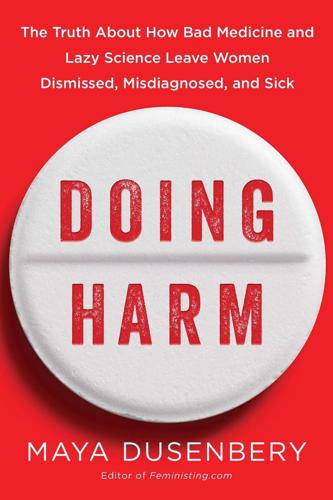
Doing Harm: The Truth About How Bad Medicine and Lazy Science Leave Women Dismissed, Misdiagnosed, and Sick
by
Maya Dusenbery
Published 6 Mar 2018
But, at this point, the gender bias in medicine runs much deeper than the gender of its practitioners. It is largely unconscious and systemic, and women doctors are not immune to it. A SYSTEMIC PROBLEM: THE KNOWLEDGE GAP AND THE TRUST GAP What I’ve come to see is that a historically male-dominated medical system has created two interlocking problems that affect the quality of care women receive. First, there is a knowledge gap: the average doctor does not know as much about women’s bodies and the health problems that afflict them. It starts at the most basic level of biomedical research, where investigators overwhelmingly use male cells and animals in preclinical studies.
…
In other words, a stereotype that women’s symptoms are likely to be “all in their heads” has been hard baked into medical knowledge itself. These two problems—the knowledge gap and the trust gap—are mutually reinforcing to such a degree that they’ve become stubbornly difficult to correct. Are women’s complaints so often dismissed because doctors simply don’t know enough about women’s bodies, their symptoms, and the diseases that disproportionately affect them? Or are women’s complaints so often dismissed because doctors hold an unconscious stereotype that women are unreliable reporters of their symptoms? Is it a lack of knowledge or a lack of trust? It seems to be both. The knowledge gap and the trust gap are so tightly interwoven at this point that they could be thought of as two sides of the same coin: Women’s symptoms are not taken seriously because medicine doesn’t know as much about their bodies and health problems.
…
Dedication For Martha and Lisa Contents Cover Title Page Dedication Introduction Part 1: Overlooked and Dismissed: A Systemic Problem Chapter 1. The Knowledge Gap Chapter 2. The Trust Gap Part 2: Invisible Women in a “Male Model” System Chapter 3. Heart Disease and Other Life-Threatening Emergencies Chapter 4. Autoimmune Disease and the Long Search for a Diagnosis Part 3: Neglected Diseases: The Disorders Formerly Known as Hysteria Chapter 5. Chronic Pain: “Pain Is Real When You Get Other People to Believe in It” Chapter 6. The Curse of Eve: When Being Sick Is “Normal” Chapter 7.
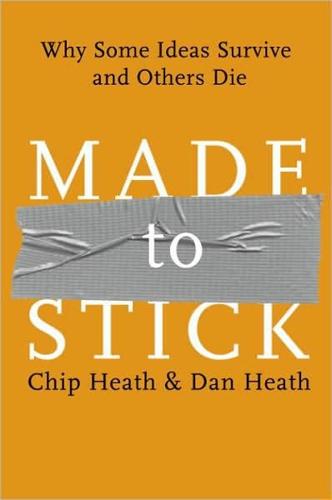
Made to Stick: Why Some Ideas Survive and Others Die
by
Chip Heath
and
Dan Heath
Published 18 Dec 2006
Rather than leading us along a plodding route from one incremental step to the next, the ideas give us a sudden, dramatic glimpse of how the world might unfold. And not just how but why. Both create knowledge gaps. Loewenstein, the author of the gap theory, says it’s important to remember that knowledge gaps are painful. “If people like curiosity, why do they work to resolve it?” he asks. “Why don’t they put mystery novels down before the last chapter, or turn off the television before the final inning of a close ball game?” Both of these unexpected ideas set up big knowledge gaps—but not so big that they seemed insurmountable. Kennedy didn’t propose a “man on Mercury,” and Ibuka didn’t propose an “implantable radio.”
…
Loewenstein argues that gaps cause pain. When we want to know something but don’t, it’s like having an itch that we need to scratch. To take away the pain, we need to fill the knowledge gap. We sit patiently through bad movies, even though they may be painful to watch, because it’s too painful not to know how they end. This “gap theory” of interest seems to explain why some domains create fanatical interest: They naturally create knowledge gaps. Take movies, for instance. McKee’s language is similar to Loewenstein’s: McKee says, “Story works by posing questions and opening situations.” Movies cause us to ask, What will happen?
…
The most telling difference, though, was revealed when teachers showed a special film about the discussion topic—during recess! Only 18 percent of the consensus students missed recess to see the film, but 45 percent of the students from the disagreement group stayed for the film. The thirst to fill a knowledge gap—to find out who was right—can be more powerful than the thirst for slides and jungle gyms. Gaps Start with Knowledge If curiosity arises from knowledge gaps, we might assume that when we know more, we’ll become less curious because there are fewer gaps in our knowledge. But Loewenstein argues that the opposite is true. He says that as we gain information we are more and more likely to focus on what we don’t know.
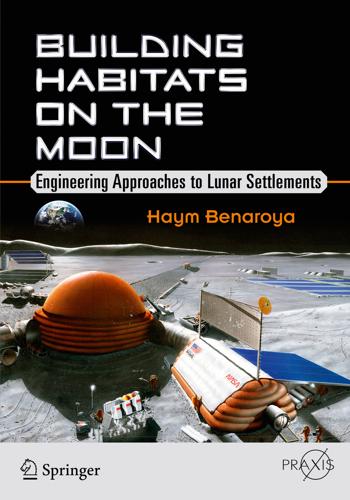
Building Habitats on the Moon: Engineering Approaches to Lunar Settlements
by
Haym Benaroya
Published 12 Jan 2018
Key challenges to engineers and scientists who will be tasked to develop the lunar mission and habitat design are the knowledge gaps that cannot be filled before being on site. For example, the lunar 1/6 g environmental effects on biology, and systems reliability in the lunar dust environment. Also of great concern is our lack of understanding of the very complex systems that will not be integrated before they are placed on the Moon. Even if the behaviors of all the components are fully understood, the complete integrated system will generally have unanticipated characteristics. Is there a way of dealing with these knowledge gaps before being there? Certain knowledge gaps can be addressed prior to going back to the Moon.
…
Key challenges to engineers and scientists who will be tasked to develop the lunar mission and structural design are the knowledge gaps that cannot be filled before being on site. For example, the lunar 1/6 g environmental effects on biology, and systems reliability in the lunar dust environment. Also of great concern is our understanding of the very complex systems that will not be integrated before they are placed on the Moon. Even if the behavior of all the components are fully understood, the complete integrated system will generally have unanticipated characteristics. Is there a way of dealing with these knowledge gaps before being there? I’m not an engineer so this question is really beyond my technical level.
…
Key challenges to engineers and scientists who will be tasked to develop the lunar mission and structural design are the knowledge gaps that cannot be filled before being on site. For example, the lunar 1/6 g environmental effects on biology, or systems reliability in the lunar dust environment. Also of great concern is our understanding of the very complex systems that will not be integrated before they are placed on the Moon. Even if the behavior of all the components are fully understood, the complete integrated system will generally have unanticipated characteristics. Is there a way of dealing with these knowledge gaps before being there? First, stop trying to speak bureaucratese, as in engineers and scientists who “will be tasked …” It is unbecoming as a scholar and a gentleman.
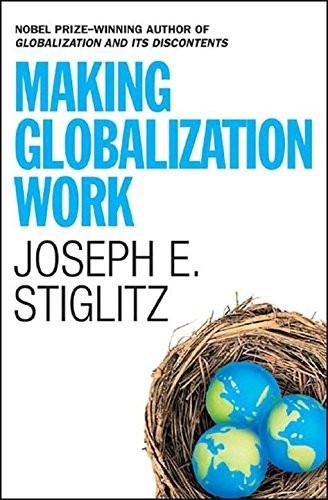
Making Globalization Work
by
Joseph E. Stiglitz
Published 16 Sep 2006
Advances in economic theory in the 1970s and 1980s illuminated the limits of markets; they showed that unfettered markets do not lead to economic efficiency whenever information is imperfect or markets are missing (for instance, good insurance markets to cover the key risks confronting individuals). And information is always imperfect and markets are always incomplete.3 Nor do markets, by themselves, necessarily lead to economic efficiency when the task of a country is to absorb new technology, to close the “knowledge gap”: a central feature of development. Today, most academic economists agree that markets, by themselves, do not lead to efficiency; the question is whether government can improve matters. While it is difficult for economists to perform experiments to test their theories, as a chemist or a physicist might, the world provides a vast array of natural experiments as dozens of countries try different strategies.
…
This was understandable: the returns are high, and many countries were spending a disproportionate part of their education budgets on university education for children of the elite. Moreover, having a strong base of primary education is essential if one wants to identify the most able for advanced training. Still, if the knowledge gap between the developed and less developed countries is to be narrowed, there also has to be a strong secondary school and university system.28 Of course, it does little good to have highly educated individuals without jobs for them. Without appropriate jobs, developing countries will lose this much-needed intellectual capital, their brightest children, in whom they have invested enormously through elementary and secondary education and sometimes even through college, to developed countries.
…
But for some of the poorest countries of the world, dependent as they are on aid from the World Bank, the IMF, or donors in Europe, America, and Japan, conditions imposed in order to receive that aid—though less onerous than in the past—may still be precluding them from following economic policies of their own choosing, including policies of the kind that proved so successful in East Asia. And recent trade agreements have made those policies—promoting technology, closing the knowledge gap, using financial markets as catalysts for growth—more difficult, if not impossible, to pursue. It is bad enough that the developing countries are at a natural disadvantage—but the rules of the game are tilted against them, and in some ways increasingly so. The global trade and financial regimes give the advanced industrial countries a marked advantage.
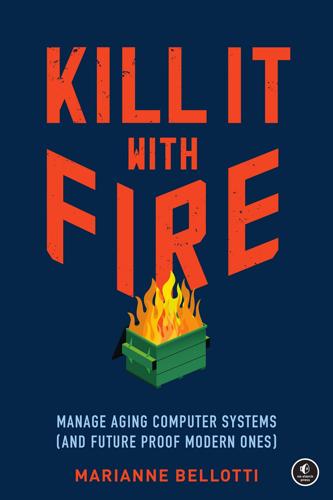
Kill It With Fire: Manage Aging Computer Systems
by
Marianne Bellotti
Published 17 Mar 2021
Depending on your team’s composition, you might want to agree on the challenges to be mapped in advance or let individuals come up with the challenges to map as a group. The advantage to not getting everyone on the same page before mapping is if your team draws from different organizational units or functions, you can better see knowledge gaps by not requiring them all to use the same challenges. After actions: By far the biggest benefit of this exercise is that it introduces alternative perspectives and priorities in a way that is not confrontational. In open discussions, different perspectives are often presented as responses to other people sharing their own perspectives.
…
What kind of scenarios justify breaking things on purpose? The most common one when dealing with legacy systems is loss of institutional memory. On any old system, one or two components exist that no one seems to know exactly what they do. If you are seeking to minimize the system’s complexity and restore context, such knowledge gaps can’t just be ignored. Mind you, the situations when you can’t figure out what a component is doing from studying logs or digging up old documentation tend to be rare, but they do happen. Provided the system doesn’t control nuclear weapons, turning the component off and seeing what breaks is a tool that should be available when all other avenues are exhausted.
…
The process view contains requirements around ensuring the file being uploaded is safe and how the tags are identified that are not visible to the user, but without the logical view, we might not realize that the intention of the system is that the data should not be considered final until the user has verified it. Kruchten developed the 4+1 architectural view model because he observed that traditional architectural diagrams tried to capture all the perspectives in one visualization. As a result, instead of enriching and deepening our ability to reason about a system, knowledge gaps were created where one view was emphasized over all others. For example, the impacts of a broken sandbox are obvious on the process view, but they do not even register on the logical view. Whereas the logical view highlights tags and text as separate things that might break independently of one another, the process view does not reveal this.
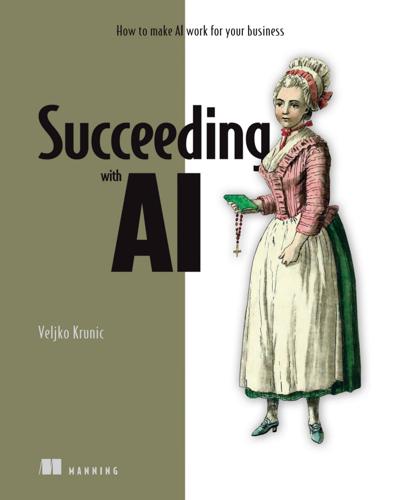
Succeeding With AI: How to Make AI Work for Your Business
by
Veljko Krunic
Published 29 Mar 2020
Don’t assume that your senior data scientists and architects know everything in their fields, and don’t impose expectations on them that they should. Such expectations only make people less likely to acknowledge skill gaps. WARNING Project leaders must know where the knowledge gaps are in the team. Piloting an AI project that requires skills your team doesn’t already possess means that you need to close these knowledge gaps. You do that by applying gap analysis [69]. An example of a gap analysis between the skillset a team presently has and the skillsets that are needed is shown in figure 2.7. 1. Propose high-level technical solution for your AI project 2.
…
Find any gaps between the needed and current skillsets. These gaps are useful in estimating the project’s difficulty level for your team. Keep this list. If you decide to proceed with a project that addresses this business question, you’ll need to make a plan for how to close the gap. (You close knowledge gaps by training your team, hiring new team members, or hiring consultants.) Understand that gap analysis is always performed based on the current situation. If you’re just thinking about an AI project as a possibility, you should perform this gap analysis on a coarse level with just an outline of a technical solution.
…
If you’re using large datasets, don’t forget to account for the time necessary to process the data and train AI algorithms. Does your team have all the skills necessary to cover this use case? What are the gaps in their skillsets, if any? (As advised in chapter 2, a team leader should be aware of knowledge gaps in the team.) Is it certain that the project is even technically possible? Do you understand the proposed AI methods enough to be positive that your team can build it, or do you just know that area of AI enough to assume that the project is possible? Once you can account for the specifics of the AI project, you can use any estimation methodology that you’re familiar with in your organization to estimate other software projects.
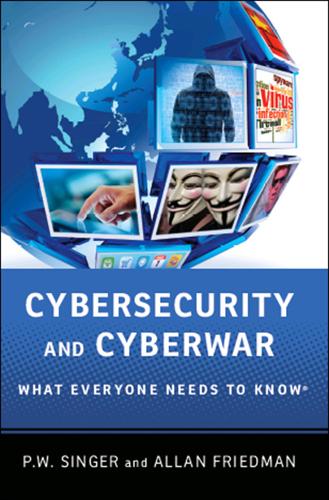
Cybersecurity: What Everyone Needs to Know
by
P. W. Singer
and
Allan Friedman
Published 3 Jan 2014
And yet there is no issue so poorly understood as this “cyber stuff.” Why Is There a Cybersecurity Knowledge Gap, and Why Does It Matter? “Rarely has something been so important and so talked about with less and less clarity and less apparent understanding.… I have sat in very small group meetings in Washington … unable (along with my colleagues) to decide on a course of action because we lacked a clear picture of the long term legal and policy implications of any decision we might make.” This is how General Michael Hayden, former Director of the CIA, described the cybersecurity knowledge gap and the dangers it presents. A major part of this disconnect is the consequence of those early experiences with computers, or rather the lack of them among too many leaders.
…
Information warfare—United States—Prevention. I. Title. QA76.9.A25S562 2014 005.8—dc23 2013028127 1 3 5 7 9 8 6 4 2 Printed in the United States of America on acid-free paper CONTENTS INTRODUCTION Why Write a Book about Cybersecurity and Cyberwar? Why Is There a Cybersecurity Knowledge Gap, and Why Does It Matter? How Did You Write the Book and What Do You Hope to Accomplish? PART I HOW IT ALL WORKS The World Wide What? Defining Cyberspace Where Did This “Cyber Stuff” Come from Anyway? A Short History of the Internet How Does the Internet Actually Work? Who Runs It? Understanding Internet Governance On the Internet, How Do They Know Whether You Are a Dog?
…
Rebekka Bonner’s Blog (blog), Information Society Project, Yale Law School, May 24, 2011, http://www.yaleisp.org/2011/05/arms-race-in-cyberspace. “command and control of warships” Mark Clayton, “The New Cyber Arms Race,” Christian Science Monitor, March 7, 2011, http://www.csmonitor.com/USA/Military/2011/0307/The-new-cyber-arms-race. WHY IS THERE A CYBERSECURITY KNOWLEDGE GAP, AND WHY DOES IT MATTER? “any decision we might make” Joseph S. Nye Jr., “Nuclear Lessons for Cyber Security?” Strategic Studies Quarterly 5, no. 3 (Winter 2011): p. 18. “I just don’t use e-mail at all” Janet Napolitano, “Uncovering America’s Cybersecurity Risk,” speech at National Journal Cybersecurity Summit, Newseum, Washington, DC, September 28, 2012.
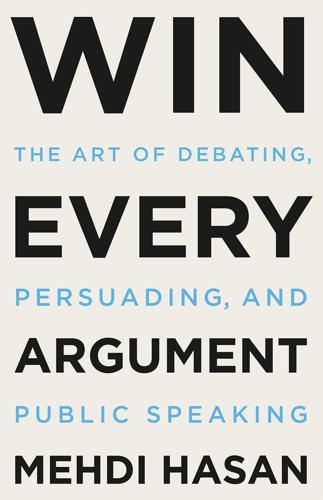
Win Every Argument: The Art of Debating, Persuading, and Public Speaking
by
Mehdi Hasan
Published 27 Feb 2023
Wouldn’t you want to sit up and listen to more of that? 2. Start with a question Ideally, a “provocative” question, say those comms experts. “Starting with a question creates a knowledge gap: a gap between what the listeners know and what they don’t know,” adds Akash Karia in his book How to Deliver a Great TED Talk. “This gap creates curiosity because people are hardwired with a desire to fill knowledge gaps.” Former NASA scientist James Hansen knows he’s not the greatest of orators, but he managed to use that very quality to grab his audience’s attention in a 2012 TED Talk on climate change.
…
: Dale Carnegie, How to Develop Self-Confidence and Influence People by Public Speaking (New York: Pocket Books, 1991), 135. “Sadly, in the next eighteen minutes”: Jamie Oliver, “Teach Every Child about Food,” filmed 2010, TED video, 21:32, https://www.ted.com/talks/jamie_oliver_teach_every_child_about_food. “provocative”: “How to Start a Speech with Power and Confidence,” Ginger blog. “a desire to fill knowledge gaps”: Akash Karia, How to Deliver a Great TED Talk: Presentation Secrets of the World’s Best Speakers (self-pub., CreateSpace, 2012), 38. “What do I know that would cause me”: James Hansen, “Why I Must Speak Out about Climate Change,” filmed 2012, TED video, 17:35, https://www.ted.com/talks/james_hansen_why_i_must_speak_out_about_climate_change.
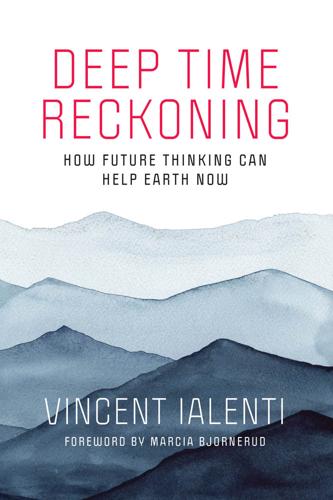
Deep Time Reckoning: How Future Thinking Can Help Earth Now
by
Vincent Ialenti
Published 22 Sep 2020
After Seppo passed away, Posiva started devoting entire sections of its reports to “transparently” describing its own uncertainties, “traceably” outlining its methodologies, and “conservatively” formulating many possible future scenarios. This included extremely pessimistic and unlikely scenarios. Posiva released new reports like Models and Data, which summarized how various models and datasets were made, how they linked together, and how their knowledge gaps could be filled. One informant called Models and Data the Safety Case’s “phonebook.” Its goal was to present both knowledge and uncertainties in accessible formats for Posiva’s many stakeholders. These stakeholders included STUK regulators, the Eurajoki community, international reviewers, the Finnish public, politicians, and civil servant experts in government ministries.
…
Complementary Considerations A subsection of Posiva’s nuclear waste repository Safety Case portfolio, which contains a hodgepodge of public relations information and qualitative evidence designed to persuade wider audiences of the repository’s strengths. The report contains most of the Safety Case experts’ analogue research findings and is seen as filling knowledge gaps that computer modeling and engineering calculations alone cannot fill. Deflation of expertise A term proposed for our current historical moment, in which political power is commonly gained through populist mockery of expert authority, when experts’ voices are drowned out by the noisy clamors of knee-jerk tweets and self-published blogs, and when experts’ inquisitive spirits are dulled by new corporate-managerial reforms and constrained by bureaucratic protocols.
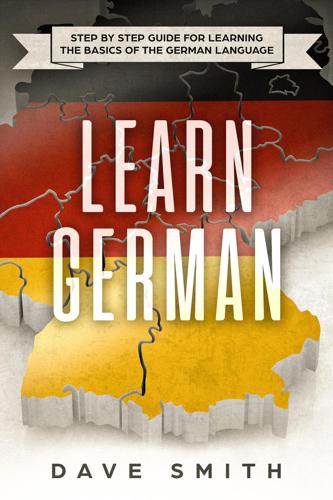
Learn German: Step by Step Guide For Learning The Basics of The German Language
by
Dave Smith
Published 14 Sep 2018
This is also more important than memorization because it actually makes room for critical thinking and the application of facts. In learning German, there is always emphasis placed on vocabulary, but there is also emphasis placed on actually putting the words together to make statements that makes sense. Another important practice in learning is to always be on the look-out for personal knowledge gaps as well as thinking errors. There is, after all, no room for competence, or in this case fluency, where there remains an overabundance of mistakes. Staying cognizant of errors in learning will not only curtail mistakes and misunderstandings, but it will also deepen the student’s understanding of the subject matter at hand.

The Patient Will See You Now: The Future of Medicine Is in Your Hands
by
Eric Topol
Published 6 Jan 2015
And no matter how much one searches the Web, that’s general information about the population, not the individual; further, the quality of that information is not assured. TABLE 2.1: Guidelines for Routine Testing or Diagnosis That Have Been Seriously Questioned or Overturned.46–49,54–62 Although we can close the information gap, the knowledge gap is much tougher. Without question, doctors and health care professionals are extensively trained and have acquired substantial knowledge. Doctors who practice general internal medicine have had dedicated preparation through four years of medical school and three years of residency; specialists have yet another two to five additional years.
…
Individuals without medical backgrounds, notwithstanding unlimited searching on the Internet, are not going to ever come close to the knowledge level of physicians. Their determination and power, even with today’s inherent obstacles, is not to be underestimated, as illuminated by Kim Goodsell’s experience, but the knowledge gap will remain. Nevertheless, data and information will ultimately be accessible evenly by all people. But it will take the end of paternalism for patients to seamlessly access the knowledge base of physicians. That will be forthcoming as we move away from the paternalistic model to one of partnership, from autocratic to far more autonomous.
…
printing press revolutionizing, 38–40 remote monitoring of vital signs and metrics, 170–172 test results, 105–107 See also entries beginning with Data; Geographic information system; Individualized medicine Informed consent, 24–26, 29, 34–36 Insurance companies Blue Button Initiative, 129–130 costs of hospitalization, 188–189 DNA data management, 232–234 employer-employee relations, 283 expanding virtual office visits, 166 reimbursements to nurses and nurse practitioners, 162–163 sequencing and analysis, 93 virtual visits, 166 Intelligent lampposts, 222–223 Intensive care units (ICUs), 147, 192–193 Intermountain Healthcare, Salt Lake City, 29, 115–116 Internet of Medical Things (IoMT), 11–12, 246–247 Internet of Things (IoT), 11 Ion channel mutations, 93 iOS, 196–197 Israel, breast cancer incidence in, 62 James, John, 186 Jawbone, 229–230 Jefferson, Thomas, 55(quote) Johnson & Johnson, 172, 215 Jolie, Angelina, 55(quote) Angelina Effect, 61–63 BRCA gene sequencing, 56–57 personal and professional achievements, 55–57 public disclosure, double mastectomy and reconstruction, 56–61 Journal of Participatory Medicine, 108 Kaiser Permanente, 108, 121, 136–137, 136(fig.), 166, 183(quote) Kaku, Michio, 119 Kaposi’s sarcoma, 262 Katz, Jay, 18–19, 34 Kelly, Kevin, 172 Khan, Razib, 65 Kingsmore, Stephen, 92 Kiosks, health visit, 167–168 Knoppers, Bartha Maria, 232 Knowlan, Donald M., 175–176 Knowledge gap, 34–36 Kolstad, Jonathan, 176–177 Krumholz, Harlan, 215 Kuntz, Rick, 215 Kwashiorkor, 266 Lab on a chip (LOC), 109–111, 262–263 Lab tests Choosing Wisely initiative, 114–115 common scans that were deemed unnecessary by Choosing Wisely, 115(table) computerized interpretation, 172–174 costs of, 140 doctorless autonomy, 278 fetal sequencing and tracking, 90–91 guidelines that have been questioned or overturned, 35(fig.)

People, Power, and Profits: Progressive Capitalism for an Age of Discontent
by
Joseph E. Stiglitz
Published 22 Apr 2019
There is no international law or even norm proscribing joint ventures, with all that entails.36 China’s success today, however, is broad-based, and not just dependent on joint ventures with companies from the West or stealing intellectual property. In some areas like social media and artificial intelligence, it is already at the forefront. The number of patents it is receiving is increasing dramatically.37 In many other areas, it has already largely closed the knowledge gap separating it from the advanced countries. The Trump administration in its trade with China is trying to close the barn door after the horses have escaped.38 As we put behind us ludicrous ideas that trade with China will quickly lead to a democratic China, there is a real question: How can there be fully open trade with a country with such a different economic system?
…
Of course, those emerging markets, like China, that have managed globalization well have enjoyed enormous success. China avoided the instability associated with short-term capital flows—hot money that could come in and out overnight. It encouraged foreign investors, and did so in a way that allowed it to narrow the knowledge gap that separated it from more developed countries. It encouraged exports, maintaining overall a stable exchange rate, and at earlier stages in its development (though not recently), keeping the value of its currency slightly lower than it otherwise would have been. Most importantly, while it allowed inequality to grow, it made sure that almost everyone benefited from globalization (moving, as we noted earlier, 740 million people out of poverty).
…
US, 343n50 Jungle, The (Sinclair), 144 Justinian Code, 352n21 Kagan, Elena, 333n35 Kennedy, John F., 28, 33 Keynes, John Maynard, 148 Keynesian economics, xv, 141–42 King, Martin Luther, Jr., 176, 180 knowledge and growth, 183–86 and productivity, xxiv as public good, 141 Trump’s disdain for, xvii and wealth of nations, 9 knowledge-based economy, 237 knowledge gap, 96, 98 knowledge institutions, undermining of, 233–34 Koch brothers, 20, 43, 279n40 Krueger, Alan, 42 Kurz, Mordecai, 54 Kuznets, Simon, 258n9 Kuznets’s Law, 258n9 labeling of food, 88 labor contracts, 73 labor force participation, 42, 181–83, 193 labor income, 51, 54 labor markets, atomistic, 64–66 Land O’Lakes, 352n23 learning society, creating, 183–86 Lee Se-dol, 315n1 legal system, bypassing by arbitration panels, 56–57 lending, 110–11; See also credit Levin, Carl, 311n6 liberalization of markets, See market liberalization life, quality of, 209–21; See also standards of living life expectancy, 14, 41 Lighthizer, Robert, xvi living standards, See standards of living loans, See credit lobbyists, 85, 102, 107, 206, 220 local market power, 61 location-based policies, 187–88 long-term investors, 106 long-term savers, 106 long-term unemployment, insurance for, 189 loopholes, in 2017 tax bill, xvii–xix, 85, 194, 206, 237 low-income trap, 44 low-skilled workers automation and, 118, 119, 122 competitive labor markets and, 198 globalization and, 21, 82, 86 job polarization and, 119 social justice and, 198 trade agreements and, 80 Luther, Martin, 10 machines, as workers, 119 MacLean, Nancy, 160 macroeconomic factors, 89, 190 macro economy, 194 Madoff, Bernie, 145, 311n4 majority rights, voting reform and, 161 Malthus, Thomas Robert, 9 Manchester, England, 188 mandatory voting, 172 manufacturing, tariffs and, 91 March on Washington for Jobs and Freedom (1963), 176 market concentration, 55–57, 108 market economy, 30 market failures, 209–10, 214–16 market forces, as impersonal, 51 market fundamentalism, 150, 239 market liberalization, xiii, 4, 21–22 marketplace of ideas, 75–76 market power, 47–78 and AI, 123–35 antitrust laws to curb, 68–76 and Big Data, 128 creating wealth vs. taking wealth, 49–50 diminishing share of labor and capital, 52–54 and division of national income pie, 51–52 of employers over workers, 64–67 implicit rules of economic game, 62 increase in, 54–62 as inimical to growth, 62–64, 183 and innovation, 57–60, 63–64 and intellectual property rights, 74–75 and labor markets, 64–67 in marketplace of ideas, 75–76 and mergers, 72–73, 108 need to constrain excesses of, 70–72 and political divide, 234 and private investment in research, 184 reasons for increases in, 61 and rents, 54 and technology, 73–74, 122 and wage suppression, 65–66 markets as basis for economy, xii–xiii excessive faith in, 154 failure to achieve full employment, 193–94 failure to address work–life balance, 192 failure to create prosperity, xxii–xxiv failure to provide public goods, 140–41 government’s role in managing, 180 limits of, 24 as means rather than ends, 24 need to restructure, 244 markups, 55, 62 Marshall, John, 241 mass incarceration, See incarceration MasterCard, 60 materialism, 30 media and marketplace of ideas, 75–76 and myth of American Dream, 225 and society’s checks and balances, 11 Trump’s attacks on, 15 Medicare, 13, 142, 168, 210 men, in labor force, 38, 42 mercantilism, 8, 240 Mercer, Robert, 132 merchant fees, 60, 70 mergers banks’ profits from, 107–8 and market power, 72–73 in media outlets, 75 preemptive, 60–61, 70, 73 vertical, 325n17 Merkel, Angela, 268n42 “Mickey Mouse” provision, 74 Microsoft, 58, 75, 325n17 middle-class societies, 13 migrant labor, 163 minimum wage, 86, 87, 199, 274n21 MIT (Massachusetts Institute of Technology), 16 moats, 48, 57–58, 62–63; See also barriers to entry/competition mobility, place-based policies and, 188 monetary policy, 83, 121 money in politics, 167–70; See also campaign spending agenda for reducing power of, 171–74 campaign spending, 171–73 as cause of current problems, 239 Citizens United case, 166, 169–70, 172 curbing influence of, 176–78 disclosure laws, 171 revolving doors and, 173–74 technology and, 132, 246 voting reform and, 162–63 money laundering, 168, 169 monopoly defined, 55 and income inequities, 198 and intellectual property rights, 74–75 natural, 61, 134 and net neutrality, 148 perfect competition vs., 56 and rents, 52 tech companies and Big Data, 131 monopsony, 64, 198 moral sentiments, 229 moral turpitude, 7, 30, 103, 240 mortgage risk, 107 mortgage system, 216–18 movements, need for new, 174–76 multilateral trade deficit, 90–91 multinational corporations, tax avoidance by, 85, 99, 108 multinational development banks, 106 Murdoch, Robert, 133, 177 Musk, Elon, 266n33 Muslim travel ban, 165 Myriad, 126–27 myths, failings masked by, 224–26 National Defense Education Act, 210 National Federation of Independent Business v.

Learning to Think: A Memoir
by
Tracy King
Published 12 Mar 2025
Latin was fine, I hadn’t returned the Cambridge Latin textbook to my old school. Maths and science were more challenging. I had a set of jumble-sale World of the Child encyclopaedias from the 1950s that were woefully outdated but at least contained enough information that I could fill in some knowledge gaps. Otherwise I had to rely on snatches of insight from Open University shows on BBC2. I enjoyed mental arithmetic, in part because of Mike’s teaching, so would look forward to the maths part of Countdown in which I would race the contestants to the answer. I usually failed, but the thrill of succeeding could sustain me for a week.
…
I didn’t know who the then chancellor of the exchequer was (or what that job actually entailed). I didn’t even know what the difference was between the main parties. Unlike books, computers and theatre, politics had not been a part of my life. I fell into a spiral of self-doubt. Formal learning instantly revealed how much I didn’t know, and that was a strong demotivator. My knowledge gaps were too great. I simply didn’t have the necessary skills. The Fortean books I was reading had presented ideas as a packaged deal, no scrutiny required. I enjoyed the law lectures and did well with history essays, but contemporary political debate required at the very least a historical knowledge of formal logic and politics.
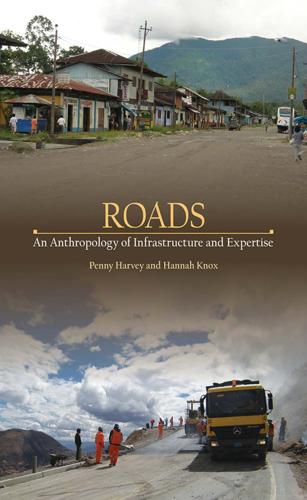
Roads: An Anthropology of Infrastructure and Expertise (Expertise: Cultures and Technologies of Knowledge)
by
Penny Harvey
and
Hannah Knox
Published 22 Jun 2015
Parts of chapter 4 appear in Hannah Knox and Penny Harvey, “Anticipating Harm: Regulation and Irregularity on a Road Construction Project in the Peruvian Andes,” Theory, Culture and Society 28 (6) (2011): 142–63. Sections of chapter 7 are also reproduced in Penny Harvey and Hannah Knox, “Surface Dramas, Knowledge Gaps and Scalar Shifts: Infrastructural Engineering in Sacred Spaces,” Occasional Paper Series 4, no. 2 (2013) (Penrith, New South Wales: Institute for Culture and Society, University of Western Sydney). Abbreviations AASHTO CAF CTAR-Loreto IFI IIAP IIRSA MRTA MTC NGO SINAMOS SNIP WWF American Association of State Highway and Transportation Officials Corporación Andina de Fomento Consejo Transitorio de Administración Regional de la Región Loreto international financial institution Instituto de Investigaciones de la Amazonía Peruana Initiative for the Integration of the Regional Infrastructure of South America Movimiento Revolucionario Túpac Amaru (Shining Path) Ministerio de Transportes y Comunicaciones nongovernmental organization Sistema Nacional de Apoyo a la Movilización Social Sistema Nacional de Inversión Pública World Wildlife Fund COLUMBIA ECUADOR Napo River Amazon River Iquitos Nauta Marañon River Ucayali River BRAZIL Carretera Panamericana Carretera Marginal de la Selva PERU Iñapari Iquitos-Nauta road Lima Pto.
…
They do so not primarily because they distance the expert from local relations, nor because they cast the expert as governing subject able to impose a particular (erroneous) truth about reality, but because their particular way of engaging the local generates a space of externality that appears, Conclusions 201 in retrospect, as problematic precisely because it is discontinuous and nonintegrated (Callon 1998). In the concern that technical projects should integrate the social, the “social” appears, by default, as that which the technical has failed to carry forward, a relational space that is disengaged and left behind. It is in this way that expert knowledge practices produce knowledge gaps, and in contexts where development and progress have widespread purchase as idioms of social improvement, such gaps signal both temporal and moral lag. One of the paradoxes that engineers are constantly battling with is their awareness that the same people who campaigned tirelessly to secure investment from governments for roads, which they believe will deliver them better lives, are also working against the realization of this dream, even when the road is under construction and requires only their cooperation for successful completion.
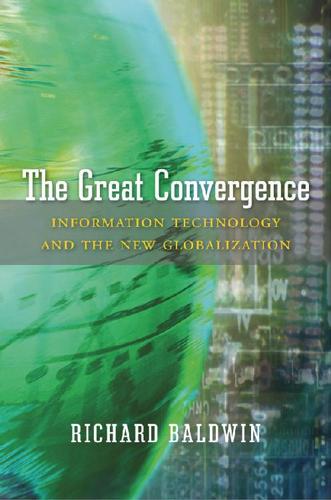
The Great Convergence: Information Technology and the New Globalization
by
Richard Baldwin
Published 14 Nov 2016
As a result, production patterns shifted and international trade volumes skyrocketed as nations started to “do what they do best and trade for the rest.” Production microclustered in advanced-nation factories even as it dispersed internationally. Productivity surged in the North and this sparked a cycle of industrialization, agglomeration, and innovation that yielded a huge North-South knowledge gap. This knowledge imbalance, in turn, led to an unprecedented divergence of incomes known as the Great Divergence. Phase Four: Globalizing factories (1990 to present) The revolution in information and communication technology (ICT) was to the second unbundling what the steam revolution was to the first.
…
See also Atlantic economies; New World North Atlantic, 42–43f, 63, 77, 211. See also Columbian Exchange North-North production sharing, 202 North-North trade, 96, 143 North-South differences: commodity super-cycle and, 215–216; factories, 144, 160; industrialization and, 55–57, 208–212, 210f, 214–215; innovation and, 211–212; knowledge gap, 19, 161–165; spillovers and, 214–215. See also A7/global South/developing nations; G7/global North/developed nations; Great Convergence; Great Divergence North-South production sharing, 216 North-South trade, 96–98, 97f, 103, 151 North to South shifts, 85–86, 135–136, 140–141 Norway, 56t, 72.

Data Action: Using Data for Public Good
by
Sarah Williams
Published 14 Sep 2020
Since there is no such thing as unbiased analytics, Data Action offers an approach that emphasizes ethical and responsible uses of data. It borrows ideas from collaborative planning theory and practice that seek to build trust among stakeholders, help incorporate both positive and negative views, create co-ownership of the outcomes, and close the knowledge gaps among those who have power and those who don't.1 Incorporating collaborative planning practices with data analytics sets this work apart because it includes the voices of the people in the process. This helps make the work more ethical but also builds new communities of interest through their shared work with data.
…
This type of sharing was particularly useful in the Ghost Cities project, as the interactive visualization helped explain the model, allowed stakeholders to interact with the data, and ultimately helped generate a debate about ghost cities from a more informed perspective. Data Brings Insights to the Public in Dynamic Ways Beyond ground-truthing, sharing data is essential for Data Action because it brings the insights to broad publics, thereby helping to close knowledge gaps essential for making decisions for society. Therefore, when building our teams to work with data for policy change, we must include designers that can communicate our policy arguments through data narratives. A great example of this is the Million Dollar Blocks project, which used data developed by the criminal justice system to generate maps to expose, block by block, the extraordinary amounts of money we spend to incarcerate people in prisons outside of their communities, while at the same time in communities of poverty we spend little money to address the systemic reasons that contribute to imprisonment or recidivism, such as poor educational and economic opportunities or lack of reentry services.

How to Spend a Trillion Dollars
by
Rowan Hooper
Published 15 Jan 2020
It’s not just that getting to Mars is incredibly difficult and expensive, it’s that surviving once you’re there throws up massive new challenges. NASA has thought a lot about this. It calls the unknown factors surrounding a Mars mission – the things we need to figure out before we could attempt a human mission, let alone establish a long-term settlement there – SKGs (Strategic Knowledge Gaps). They include, but aren’t limited to: data about the atmospheric dynamics and weather of the planet, which is needed to enter orbit and land; information about potential past and present life on the planet, including the distribution of past and present water; and data about the back- and forward-contamination risk – that is, the biohazard posed by passing Martian material to Earth, and vice versa.
…
We need to develop technology that will sustain human life during the 12-month trip to and from Mars, and sustain humans on the surface for multiple Martian years. We also need information about the toxicity of the dust, and the radiation exposure risk on the surface, and to identify a safe and suitable landing site for a human mission. We don’t know anything about the psychological impact of being on another planet. To close the strategic knowledge gaps, NASA has identified dozens of GFAs (Gap Filling Activities). So couldn’t we just parachute money in to fund these activities? Sure, we could. We could try to spend our way through the unprecedented academic, social, engineering and scientific challenges, the bureaucracy, the unbelievable effort and attention to detail required, not to mention the ethical and geopolitical turmoil a settlement programme would kick up.

Geek Heresy: Rescuing Social Change From the Cult of Technology
by
Kentaro Toyama
Published 25 May 2015
The heroes were the ones who were in the streets, those who got beaten up, those who got arrested and put their lives in danger.”51 There is no protest without citizen frustration. There is no rebellion without a sacrifice of personal safety. Amplification as an idea is hardly novel. My colleague Jonathan Donner, an expert on mobile phones in the developing world, pointed me to a 1970 paper on the “knowledge gap hypothesis,” in which the authors reported that public-service messaging delivered through mass media was better absorbed by wealthier, more educated households.52 Lewis Mumford, a prominent twentieth-century technology critic who was part skeptic and part contextualist, wrote a two-volume work called The Myth of the Machine, in which he mentions in passing that technology “supported and enlarged the capacities for human expression.”53 And Philip Agre, another computer-scientist-turned-technology-analyst, wrote prescient articles about the Internet in politics.
…
See also Aspirations iPad initiatives, 11 Iran, 23, 35–36 The Iron Law of Evaluation, 70, 81 Islam, music and, 39 “Itchman,” 40 I-TECH, 136–139, 207 Jakiela, Pamela, 143–144 Japan American School in Japan, 211 educational system, 145, 256(n45) healthcare, 43 modernization, 178, 266–267(n11) nuclear plant disaster, 235(n29) technology-loving stereotype, xiii encouraging virtue, 276(n8) Jasanoff, Sheila, 23 Jenner, Edward, 67 Jensen, Derrick, 24 Jhunjhunwala, Ashok, 104 Jigme Singye Wangchuck, King of Bhutan, 87–88 Jobs, Steve, 84, 119, 135, 275(n8) Johnson, Lyndon B., 7 Joshi, Deep, 208, 273(n24). See also Pradan organization Karlan, Dean, 59–60 Karnani, Aneel, 83–84 Kelsa+ project, 122–125 Kennedy, John F., 7 Kenya, xi–xii, 156–157, 258–259(n4) Khan, Salman, 11 Khan Academy, 11, 14 King, Gary, 49–52 Kinnan, Cynthia, 236–237(n14) Kirp, David L., 214, 275(n5) Kiva.org, 71 Knowledge gap hypothesis, 37 Knowledge management, 44–46 Kohlberg, Lawrence, 161, 260(n18) Kotra, India, 77–82 Kranzberg, Melvin, 24 Kuznets, Simon, 245(n56) Labeling, 172, 264–265(n1) Labor exploitation, 85–86, 166–167, 243(n31) Lakeside School, Seattle, Washington, 14 Language learning, 123–124 Lareau, Annette, 250(n11) Latent desires, 39–41 Law, Lalitha, 140–141 Law of Amplification.
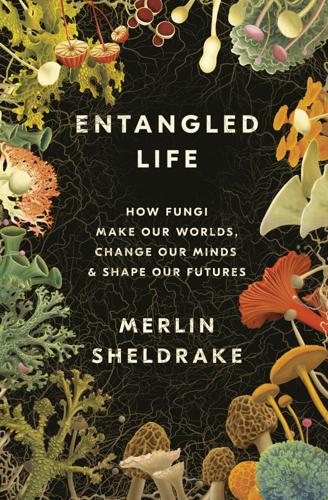
Entangled Life: How Fungi Make Our Worlds, Change Our Minds & Shape Our Futures
by
Merlin Sheldrake
Published 11 May 2020
Even within plant and fungal species, there is a large amount of variation between the behavior of individual plants and fungi (Mateus et al. [2019]). small and back again: For the estimate of number of trees on Earth see Crowther et al. (2015). what they’re actually doing: For a discussion of knowledge gaps in mycorrhizal research see Lekberg and Helgason (2018). of excitement and frustration: For a discussion of plant and fungal exchange and how it is controlled see Wipf et al. (2019). In one study, a single fungus connected to two different species of plant at the same time—flax and sorghum—supplied more nutrients to flax, even though sorghum supplied the fungus with more carbon.
…
Oxford, UK: Elsevier, pp. 241–62. Leifheit EF, Veresoglou SD, Lehmann A, Morris KE, Rillig MC. 2014. Multiple factors influence the role of arbuscular mycorrhizal fungi in soil aggregation—a meta-analysis. Plant and Soil 374: 523–37. Lekberg Y, Helgason T. 2018. In situ mycorrhizal function—knowledge gaps and future directions. New Phytologist 220: 957–62. Leonhardt Y, Kakoschke S, Wagener J, Ebel F. 2017. Lah is a transmembrane protein and requires Spa10 for stable positioning of Woronin bodies at the septal pore of Aspergillus fumigatus. Scientific Reports 7: 44179. Letcher A. 2006. Shroom: A Cultural History of the Magic Mushroom.
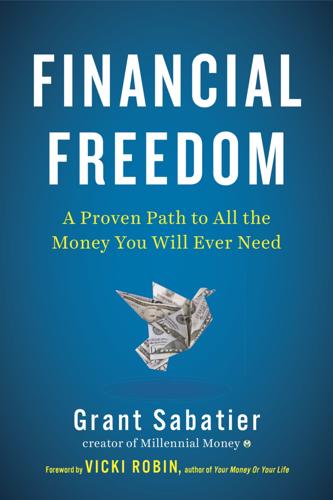
Financial Freedom: A Proven Path to All the Money You Will Ever Need
by
Grant Sabatier
Published 5 Feb 2019
Your success isn’t guaranteed just because the information is available, but two things will make it happen: curiosity and focus. We’ve entered the era of lifetime learning. The more you learn, the more money you’ll make. Always keep learning. No matter what you want to learn, find someone who needs that skill, sell it to them, and keep filling in your own knowledge gaps. This is an awesome way to build up skills and experience and test out a new career track without having to go back to school or dive into a full-time job. Think about what you love doing—everything you love doing. Your hobbies, your passions, and your skills. Look at your skills in and outside your full-time job.
…
I was able to get access (and learn from) a global expert, and now I have access to information that you can’t even find online. I’ve done this many times for legal and tax questions. You can also do it for financial questions or when you run into a complex issue. Many financial advisors can even chat with you over Skype on your own time. Ideally use financial advisors to fill your knowledge gaps, not manage your money. If you want to work with a financial advisor, work with fee-only financial advisors who charge per hour, not based on a percentage of your assets. CHILL AS HARD AS YOU HUSTLE Making money can be addictive, and it’s easy to spend all of your time and energy pursuing financial independence.
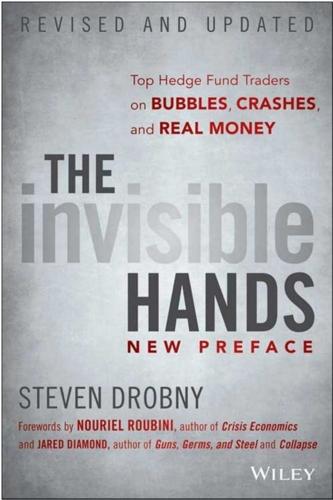
The Invisible Hands: Top Hedge Fund Traders on Bubbles, Crashes, and Real Money
by
Steven Drobny
Published 18 Mar 2010
I do, however, believe I have a good grasp of the logic that forms the building blocks of how financial instruments are priced and how the macro environment affects financial markets. Long-term winners in financial markets use common sense. Less blind faith in models and a more common-sense approach would have helped many players during the past few years. Should institutional investors use outside advisors to help plug their knowledge gap? In theory, yes, but not all consultants and rating institutions are up to their jobs. They are simply not experts in the subjects in which they claim expertise. Some of them do not have a clue what they are doing, yet they still peddle advice to pension fund boards and institutions that, in many cases, know even less than they do.
…
See also Hyper-Great Macro Experiment explanation (Drobny) success Great Moderation Bernanke opinion Greenspan, Alan actions blame Conundrum speech Gunslinger fund manager Hang Seng, shorting Harvard University, endowments annual long-term performance assets, decline equity returns, contrast portfolio (2010) problems Headline inflation, core inflation (contrast) Hedge funds assets, growth business, Equity Trader outlook downside protection managers cash, availability prop trader, contrast transportation money allocation lending loss management, Commodity Trader perspective one-dimensional managers Plasticine Macro Trader complaint playing problems (2008) prop desk, contrast real money, differentiation redemptions running, worries space, Professor perspective stocks, contrast usage, Plasticine Macro Trader perspective Hedges, purchase Hendry, Hugh HFRI Macro Index Historical asset class, indicator Historical correlations, usage Historical events, examination Hoover, Herbert House, The business entry Human bias, impact Human Development Index (HDI) Hyper-Great Macro Experiment Hyperinflation impact risk scenario worry Hypothecation Hypotheses falsification, absence running Hypothesis testing, preference Ideas source trading Illiquid assets allocation avoidance inexpensiveness overinvestment Illiquid investments Illiquidity appearance cost, calculation increase needs, consideration premium, Pensioner measurement process risk premium, exposure Illiquidity assets risk value Illiquidity risk hedge process location mitigation recognition Illiquid positions, ownership Illiquid private deals, impact Illiquid strategies, investor engagement Incentive structures, change (process) India FDI GDP investment change Industrial production (IP) Inflation approach Commodity Trader perspective control deflation, contrast feeding, absence fiscal stimulus, impact hedge active commodity manager, impact impact increase persistence presence pressure psychological element quantitative easing, impact risk, increase risk premium volatility, reduction Inflation (1980-2000) Inflation-linked bonds Inflation-linked investment Inflation protected government bonds, purchase Inflection points, awareness Information arbitrage definition filtration flow, absence inundation Inside the House of Money (Drobny) Institutional investors impact leverage, usage (preclusion) money, loss outside advisors, usage Institutional money management, change Institutional real money mandates, Plasticine Macro Trader advice Insurance protection Intellectual property, anchor Intercontinental Exchange (ICE) Interest rates (1980-2000) increase trades weakness zero level International diversification, importance Investment account, volatility flow alternatives approach, defense committees, challenge human bias, impact hypotheses/positions, running losses rear view mirror process vehicles, usage Investment grade bonds (IG8) Investment Management Association (IMA) Investors base, impact complacency decisions, manager track record basis losses mistakes purchases, crisis risk management IOU papers/obligations Japan bullishness (Plasticine Macro Trader) economic malaise inflation-protected bonds inflation scenario performance (1990) rolling 10-year inflation stagnation Jobs, saving/creation (Obama phrase) Jones, Paul Tudor (success) JPMorgan Chase (2009) Keynes, John Maynard commodity belief Knowledge gap, reduction Latam-type bond defaults Latam-type financial crisis Latin America, performance Lehman Brothers government bond leverage change saving Leitner, Jim analysis, awareness interview lessons Leitner Center for International Law and Justice Leverage cash, relationship contrast efficient frontier, relationship function impact presence reduction usage Pensioner prediction Limited partnerships, leverage Liquidity crisis crisis (2008), leverage impact excess focus importance management, problem measurement process overvaluation perspective Predator definition premium provider risk excess scarcity valuation quantitative models, usage value example lesson Liquid markets mentality Livermore, Jesse London Interbank Offered Rate (LIBOR) basis, problem futures, ownership increase (2007) LIBOR-OIS basis (2008) three-month LIBOR Long-dated out-of-the-money equity index call options, purchase Longer-dated nominal bonds Long-only investments Long-term bonds, usage Long-Term Capital Management (LTCM) crisis problem Long-term fair value, departure Long-term fixed income assets Long-term historical correlations impact usage Long-term historical returns, usage Long-term horizon, irresponsibility Long-term inflation hedging investor nervousness Long-term money Long-term time horizon, advantage M2 (money supply measurements) Macroeconomics environment, creation imbalances pricing Macro factors examination risk Macro fund, running Macro hedge fund community Macro principles Macro risk management Macro scenario, preparation Macro traders, profits Macro trading Major Market Indices (2007) Managers, investor base (impact) Margin-to-equity, limits Markets Bond Trader viewpoint change conditions, improvement environment, identification functioning, understanding fundamentals/psychology, impact outguessing positioning, importance psychological game psychology, understanding zero-sum game Markets to fundamentals Marshall Plan Maximum Sharpe Ratio (MSR) portfolio construction goal Medium-term bonds, usage Medium-term theme projects Merrill Lynch saving (Thundering Herd) Microeconomic imbalances Mines, Commodity Investor purchase Minsky moment Misery index, peak Mishkin, Frederic S.
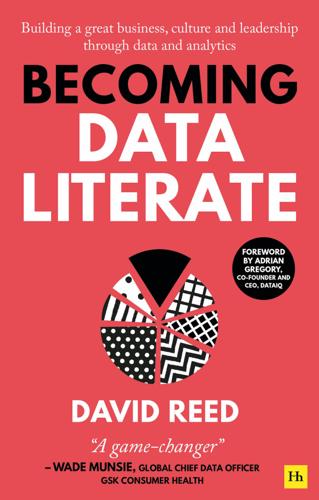
Becoming Data Literate: Building a great business, culture and leadership through data and analytics
by
David Reed
Published 31 Aug 2021
Data can appear to its internal customers as something of a ‘black box’, especially the work of functions like analytics and data science which generate models through an invisible, quasi-magical process. The level of communication with stakeholders has a significant impact on this, especially if data teams learn the language of the business and thereby reduce the knowledge gap between counter-parties. This further underlines why building data literacy across the organisation is an important goal for the data leader. Communication within data teams and between teams and the data leader is also essential. This is best achieved through a combination of formal meetings where information is exchanged in a structured way and by creating an informal culture which encourages casual interactions.

Don't Burn This Book: Thinking for Yourself in an Age of Unreason
by
Dave Rubin
Published 27 Apr 2020
And if Jordan was asked to comment on very specific happenings in U.S. politics, he’d politely remind everyone that he’s Canadian and had enough on his plate with Canadian prime minister Justin Trudeau, which always got a big laugh. Especially while in Canada. Simply put, he felt no shame in owning his “knowledge gap” and deferring to experts. Want to know the best part? Absolutely nobody cared that the expert didn’t know everything. Nobody gasped. Nobody thought any less of him for it or demanded a refund. In fact, many found his candor refreshing. As the tour went on, I realized that these moments of humility were something I had implemented in my own work.
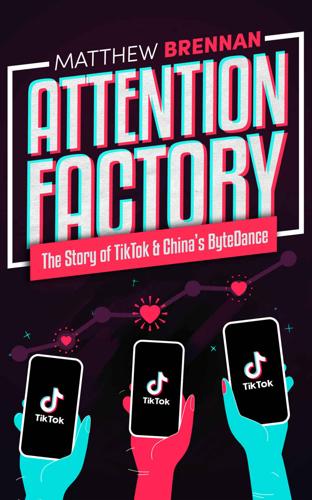
Attention Factory: The Story of TikTok and China's ByteDance
by
Matthew Brennan
Published 9 Oct 2020
Inside you will find a detailed, accurate, and hopefully somewhat entertaining account of the rise of ByteDance’s business fortunes as a private company, including the competitive dynamics with rival internet service providers. This book is fundamentally an exploration of the short video format and machine recommendation as the most important internet trends of the past three years. My primary motivation for writing this book was to shine a light on the extensive knowledge gap on ByteDance between China and the rest of the world. Many anecdotes included in this book are widely known in China but still making their way into English for the first time. In addition, through original research, I have corrected some inaccuracies, dispelled a few myths, and sprinkled in a healthy dose of original analysis and insight regarding the subject, which I hope readers will find value in.
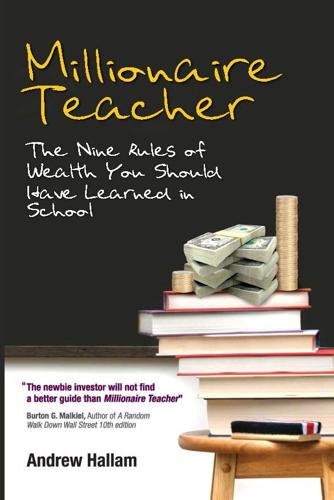
Millionaire Teacher: The Nine Rules of Wealth You Should Have Learned in School
by
Andrew Hallam
Published 1 Nov 2011
Common Sense on Mutual Funds by John Bogle “After you’re finished with these two books, you will know more about finance than 99 percent of all stockbrokers and most other finance professionals,” he said.4 From what I’ve seen, he’s right. When my good friend Dave Alfawicki and I went into a bank in White Rock, British Columbia, in 2004, we met a young woman selling mutual funds. Dave wanted to set up an indexed account, and I went along for the ride. The adviser’s knowledge gaps were extraordinary, so I asked the question: What kinds of certification do you have and how long did it take? She received her license to sell mutual funds through a course called Investment Funds in Canada (IFIC). It’s supposed to take three weeks of full-time studying to complete the course, but she and her classmates finished it in just two intensive weeks.5 Before the two-week course, she knew nothing about investing.
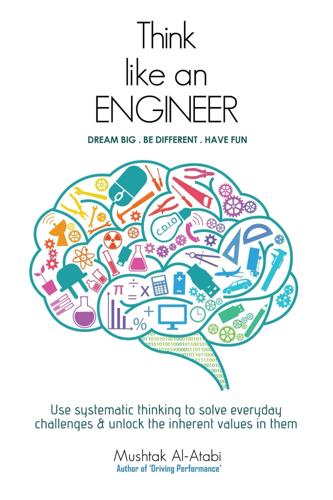
Think Like an Engineer: Use Systematic Thinking to Solve Everyday Challenges & Unlock the Inherent Values in Them
by
Mushtak Al-Atabi
Published 26 Aug 2014
Literature Review In this part of the report, the available information about the work is outlined and critically analysed. A good literature review surveys the available books, journals, patent databases, conference proceedings and other technical reports. The outcome of a good literature review is the establishment of the edge of the available knowledge and the identification of any knowledge gaps and challenges that are delaying progress in the field. 5. Methodology This section is dedicated to describe the methodology that is used to achieve the objectives. This could be experimental, computational, mathematical, statistical or combination of these methods. The section also describes how the data will be collected and analysed and clearly outlines the limitations of the methodology. 6.

Protecting Pollinators
by
Jodi Helmer
Published 15 Nov 2019
May 15, 2018. https://www.lunduniversity.lu.se/article/sowing-strips-of-flowering-plants-has-limited-effect-on-pollination. Lundin, Ola, Maj Rundlöf, Henrik G. Smith, Ingemar Fries, and Riccardo Bommarco. “Neonicotinoid Insecticides and Their Impacts on Bees: A Systematic Review of Research Approaches and Identification of Knowledge Gaps.” PLOS One, August 27, 2015. http://journals.plos.org/plosone/article?id=10.1371/journal.pone.0136928. MacIvor, J. Scott, and Laurence Packer. “‘Bee Hotels’ as Tools for Native Pollinator Conservation: A Premature Verdict?” PLOS One, March 18, 2015. http://journals.plos.org/plosone/article?id=10.1371/journal.pone.0122126.
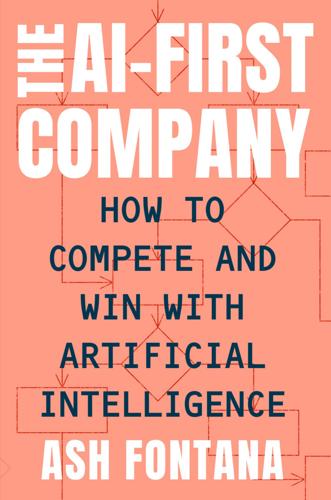
The AI-First Company
by
Ash Fontana
Published 4 May 2021
When we change what we use to learn, we can change how fast we learn. We can become more intelligent. This is all very exciting, and yet we don’t have a vocabulary to describe what it means for companies, the economy, and the world. Vocabulary is important because it helps us identify things and figure out knowledge gaps. Analogies can be helpful, but they don’t go far enough. People tried to define AI in terms of scale, referring to data as the “new oil”—maybe because oil is an input, and the more of it you have, the better. People also tried to define AI in terms of networks, talking about data network effects—maybe because social networking was a major trend at the start of the big-data era.
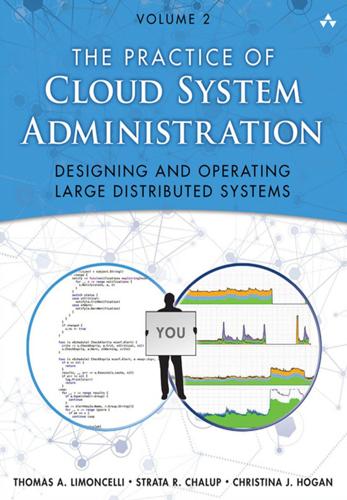
The Practice of Cloud System Administration: DevOps and SRE Practices for Web Services, Volume 2
by
Thomas A. Limoncelli
,
Strata R. Chalup
and
Christina J. Hogan
Published 27 Aug 2014
Trying a large-scale exercise is futile and counterproductive, if you haven’t first built up capability and confidence through a series of smaller but ever-growing drills. 15.3.1 Service Testing A very practical place to start is by picking individual failover mechanisms to test. Identify failover mechanisms that are not exercised often and pick one. These tests should be contained such that if an issue is uncovered, only the immediate team members are needed to respond. Typically these tests find broken processes, documentation gaps, knowledge gaps, and configuration problems. The drill involves causing a failure that will trigger the failover mechanism. It may involve powering off a machine (pulling the power cord), shutting down a virtual machine, killing running software, disconnecting a network connection, or any other way one can disrupt service.
…
Google and Facebook haven’t had a slow ramp-up on a new service, even with a soft launch, for years. Any new service is immediately flooded with new users. Therefore the ability to do accurate capacity planning on new services has become a highly desired skill. Fortunately, there is a technique that can be used to bridge the knowledge gap, and that technique is the dark launch. Facebook used a dark launch of its chat messaging system to ensure that the company would bring a reliable system to its user base. In a dark launch, the new feature is released into production with simulated traffic, in effect treating the production environment as a well-controlled testbed for the new feature’s resource needs.
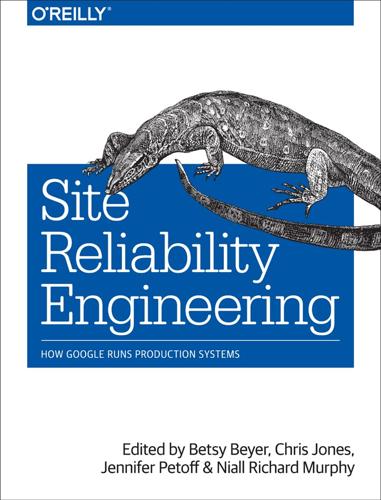
Site Reliability Engineering: How Google Runs Production Systems
by
Betsy Beyer
,
Chris Jones
,
Jennifer Petoff
and
Niall Richard Murphy
Published 15 Apr 2016
A Treacherous Enemy: Operational Underload Being on-call for a quiet system is blissful, but what happens if the system is too quiet or when SREs are not on-call often enough? An operational underload is undesirable for an SRE team. Being out of touch with production for long periods of time can lead to confidence issues, both in terms of overconfidence and underconfidence, while knowledge gaps are discovered only when an incident occurs. To counteract this eventuality, SRE teams should be sized to allow every engineer to be on-call at least once or twice a quarter, thus ensuring that each team member is sufficiently exposed to production. “Wheel of Misfortune” exercises (discussed in Chapter 28) are also useful team activities that can help to hone and improve troubleshooting skills and knowledge of the service.
…
Keep in mind that, due to the team’s perspective and history, some very small problems or outages may produce an inordinate amount of stress. Identify Kindling Once you identify a team’s largest existing problems, move on to emergencies waiting to happen. Sometimes impending emergencies come in the form of a new subsystem that isn’t designed to be self-managing. Other sources include: Knowledge gaps In large teams, people can overspecialize without immediate consequence. When a person specializes, they run the risk of either not having the broad knowledge they need to perform on-call support or allowing team members to ignore the critical pieces of the system that they own. Services developed by SRE that are quietly increasing in importance These services often don’t get the same careful attention as new feature launches because they’re smaller in scale and implicitly endorsed by at least one SRE.
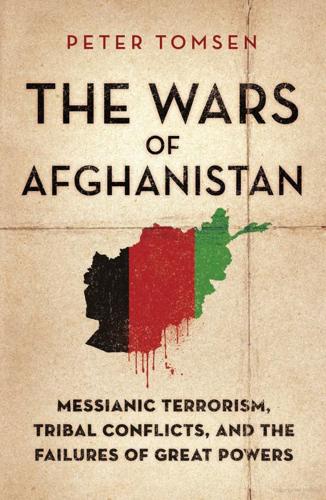
The Wars of Afghanistan
by
Peter Tomsen
Published 30 May 2011
Bin Laden’s propaganda capitalized on the 1980–1989 Soviet occupation of Afghanistan, the presence of American troops in the Saudi holy land after the first Gulf War (1991), the 2003 U.S. invasion of Iraq, and Israeli confiscation of Palestinian land in Jerusalem and the West Bank. The knowledge gap in the West about the cultural and religious context of Wahhabism has played into the hand of bin Laden and his extremist Arab, Pakistani, and Afghan collaborators .7 A similar knowledge gap long existed about Soviet communism and its deceptive methods after the 1917 Bolshevik Revolution. The West gradually closed that breach after World War II. In contrast, American intelligence failed to identify the birth and early expansion of Islamist militancy during the Soviet occupation of Afghanistan and in the decade that followed it.
…
In 1996, former CIA director and future defense secretary Robert Gates wrote that the CIA examined ways to increase fundamentalist Arab participation in the anti-Soviet Afghan war, “perhaps in the form of some sort of ‘international brigade.’ ... We expected post-Soviet Afghanistan to be ugly, but never considered that it would become a haven for terrorists operating worldwide.”8 The surprise is that almost a decade after 9/11 the knowledge gap about the nature and strategy of radical Islamic groups and their creeds in the Muslim world persists. Juhaiman al-Otaibi’s 1979 Mecca uprising inflamed a sensitive rift in Islam between cleric and ruler as old as religion itself. Religious legitimacy to rule had been an eagerly sought commodity by kings and potentates in medieval Europe.
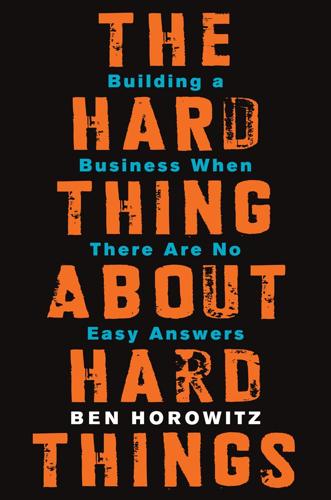
The Hard Thing About Hard Things: Building a Business When There Are No Easy Answers
by
Ben Horowitz
Published 4 Mar 2014
If she can separate the importance of the issues from how she feels about them, she will avoid demonizing her employees or herself. IT’S A LONELY JOB In your darkest moments as CEO, discussing fundamental questions about the viability of your company with your employees can have obvious negative consequences. On the other hand, talking to your board and outside advisers can be fruitless. The knowledge gap between you and them is so vast that you cannot actually bring them fully up to speed in a manner that’s useful in making the decision. You are all alone. At Loudcloud, when the dot-com bubble burst and subsequently sent most of our customers into bankruptcy, it crippled our business and devastated our balance sheet.
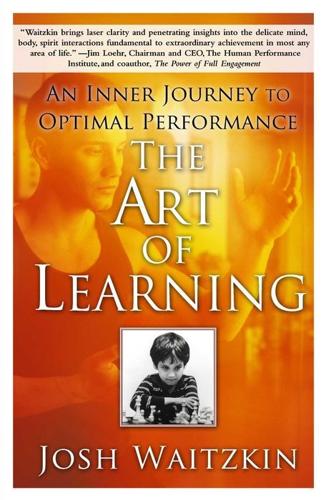
Art of Learning
by
Josh Waitzkin
Published 7 May 2007
I was pretty skilled in Tai Chi Chuan (had recently won bronze in the World Championships), had some judo experience, and at this time, Ahmed and I were both a little over a year into our study of the grappling art Brazilian Jiu Jitsu with the mind-blowing martial artist and teacher John Machado. Because of our different backgrounds, training with Ahmed often led to creative eruptions. When such knowledge gaps exist, much of the battle involves surviving the unexpected and bringing the game into a place where the neural pathways are carved. Other times, it’s like running a gauntlet. When the transition from the familiar to the foreign takes place, it feels like the mind is flying downhill over fresh snow and suddenly hits a patch of thick mud.
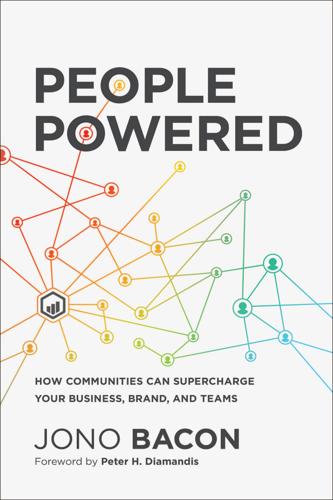
People Powered: How Communities Can Supercharge Your Business, Brand, and Teams
by
Jono Bacon
Published 12 Nov 2019
Training is useful to train groups of people in developing specific sets of skills and experience. This provides a great way to impact lots of people, but it lacks the personal touch of the previous two types of mentoring. As a general rule, you should run one or two training sessions a quarter that cover the most critical knowledge gaps in your community. These can be run as online webinars and usually are not longer than an hour in length. We will cover how to do this in more depth in chapter 9. Look at the areas where you strategically want to build skills and capabilities and where there is interest. Now produce those training sessions and encourage people to join.
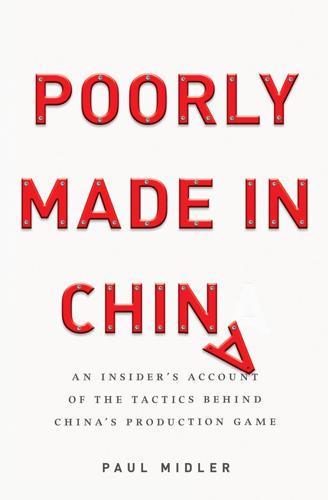
Poorly Made in China: An Insider's Account of the Tactics Behind China's Production Game
by
Paul Midler
Published 18 Mar 2009
Saul later told me not to worry about his brother’s objections. All of this business about reading a diamond, he said, was not so difficult. He gave me some promotional material from a nearby booth. It was a catalog from the Gemological Institute of America. One of their courses, he said, would help fill in any knowledge gaps. “How long is the course?” I asked. “Maybe a week,” he said. “Only one week?” It didn’t sound like a very long time at all. I told Saul that his brother might want to consider that it took a great deal more time to learn Chinese, and that I had been working in China for a number of years.

The Wikipedia Revolution: How a Bunch of Nobodies Created the World's Greatest Encyclopedia
by
Andrew Lih
Published 5 Jul 2010
Whether it was the [[2004 Indian Ocean earthquake]] and resulting tsunami or the [[7 July 2005 London bombings]], Wikipedians were updating articles every few seconds to reflect the latest breaking information. This function as a running log of history is quite unprecedented and uniquely fills a traditional “knowledge gap” created by the lag time between the publication of a newspaper and a history book. In the English Wikipedia, where activity is nonstop, articles have become an instant snapshot of the state of the world, serving as a continuous working draft of history. Given all the furious activity it takes to update the site, outsiders are fascinated as to why Wikipedians do what they do.
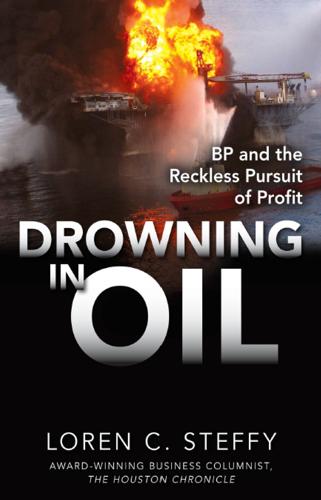
Drowning in Oil: BP & the Reckless Pursuit of Profit
by
Loren C. Steffy
Published 5 Nov 2010
On shallower wells, for example, the blowout preventer, the fail-safe device that failed in the Deepwater Horizon disaster, sits on the deck, rather than a mile below the surface. Inspectors can see it when they tour a rig. The Horizon’s was on the seafloor, a mile below the surface, and accessible only by remote underwater submarines. A F O X I N T H E H E N H O U S E As the knowledge gap between the industry and the inspectors grew, the MMS expanded the idea of voluntary compliance. Industry experts argued that only the companies themselves had the technical knowledge to regulate the business. Bureaucrats, being unfamiliar with the complexity of offshore drilling, would only inhibit production, leading to higher prices and a greater dependence on foreign oil.
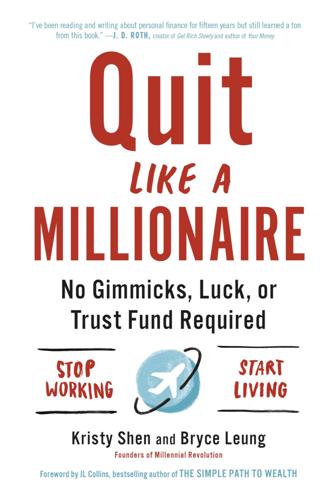
Quit Like a Millionaire: No Gimmicks, Luck, or Trust Fund Required
by
Kristy Shen
and
Bryce Leung
Published 8 Jul 2019
So when an assignment or test is completed by a student, rather than their performance being used as a metric to compare their worthiness against the rest of the class, their correct answers are applauded while their incorrect answers are used as teaching tools and learning experiences. Rather than punishing students for answering incorrectly, parents use the test to guide the student’s learning experience and fill in any knowledge gaps they have. They can take the test as many times as they like to solidify their knowledge. What if you don’t have any teaching experience? To a curious parent, world schooling might sound interesting, but the idea of taking on your child’s education is daunting, especially if you don’t have any teaching background.
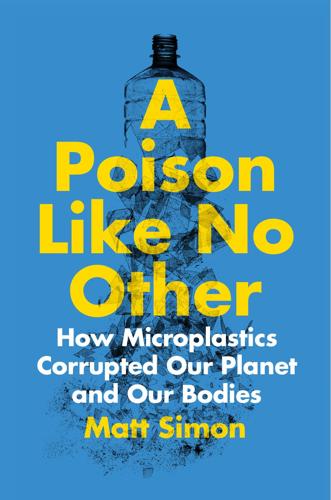
A Poison Like No Other: How Microplastics Corrupted Our Planet and Our Bodies
by
Matt Simon
Published 24 Jun 2022
Later on in life, too, people who were exposed prenatally to EDCs are more likely to develop breast and ovarian cancer, and the chemicals have been linked to lower sperm quality. “We can already see that there could be a potential problem,” says Dusza. “What we don’t 145 146 a poison like no other know yet is actually how many of these chemicals—and what those chemicals are—that are associated with plastic particles. So there’s still a big knowledge gap in actually distinguishing the particle toxicity and chemical toxicity. We know that it’s not only the particles that may cause the problem but also different chemicals leaching out of those particles.” The issue is—again—that plastics manufacturers don’t disclose the ingredients in their products, which leaves the job to chemists to reverse-engineer the recipes.
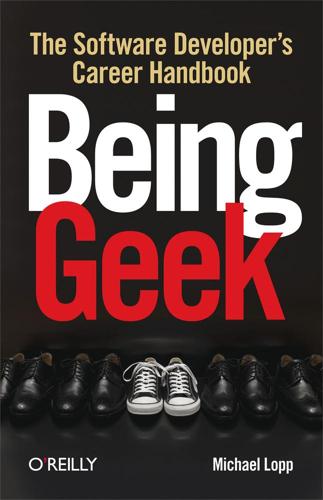
Being Geek: The Software Developer's Career Handbook
by
Michael Lopp
Published 20 Jul 2010
My assumption is that the majority of the knowledge you believe is in Alpha's head has already cross-pollinated to other team members. Alpha's departure will give others the incentive to trust what they already know. But Pay Attention: While it's likely that formerly quiet team members will step in to fill the knowledge gap, there is knowledge and ability walking out the door. But it's not the broad knowledge you're concerned about—it's the little undocumented knowledge. Why is it that variable has that particular name? What is the story behind the naming scheme for the servers? What is this cryptic note in the code that reads, "Two more of these and we're screwed"?
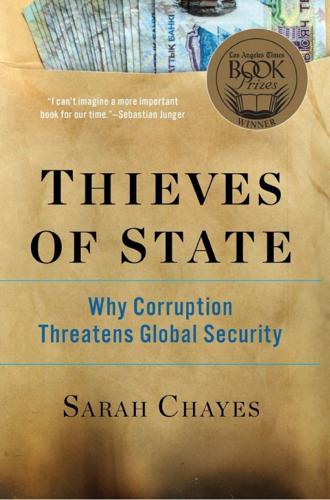
Thieves of State: Why Corruption Threatens Global Security
by
Sarah Chayes
Published 19 Jan 2015
A framework for analysis should include such information as: the levers of power captured by the network, its favored revenue streams, its structure and manning, the degree of vertical integration, the internal and external enablers that reinforce it and facilitate its operations, its vulnerabilities, public attitudes toward corrupt practices, the other risk factors with which corruption interacts, the presence of constructive (popularly respected) actors inside or outside of the system, as well as the details of financial flows. Analysts and intelligence executives must design new collection requirements to fill knowledge gaps on these issues. Financial intelligence and information that helps pierce shell company or “beneficial ownership” smoke screens is particularly vital. Given the different types of specialized knowledge required, “fusion cells,” bringing civilian and military intelligence professionals together with colleagues from the Treasury Department or the FBI or their international equivalents, will increase efficiency.
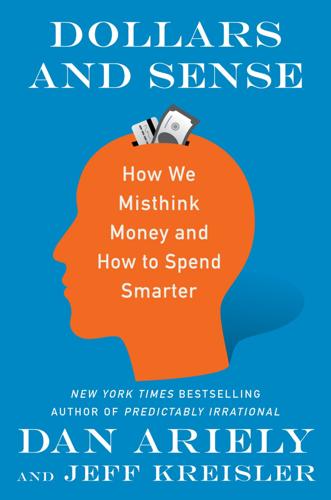
Dollars and Sense: How We Misthink Money and How to Spend Smarter
by
Dr. Dan Ariely
and
Jeff Kreisler
Published 7 Nov 2017
We don’t need to spend a week researching the price of chewing gum, but we should probably dig around for a few hours, or at least a few minutes, before going to a car dealership. WHAT’S IT GONNA TAKE TO GET YOU INTO THIS RESEARCH? Car dealerships have a uniquely large asymmetry of information between the salespeople (who know a lot) and the rest of us (who know very little). Automobile salespeople frequently take advantage of that knowledge gap, and, as it happens, they are more likely to take advantage of certain consumers. Which ones? Women and minorities! So, some people are more likely to benefit from doing online research before going to a car dealership than others. Who would gain more from arming themselves with information? The same groups: women and minorities.
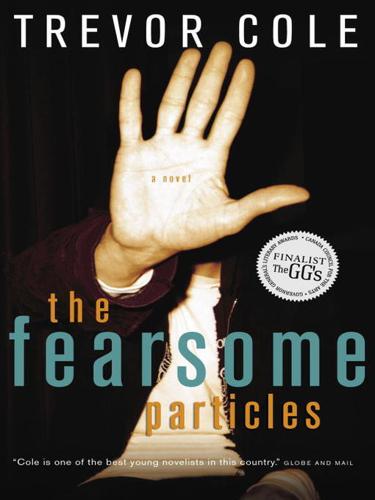
Fearsome Particles
by
Trevor Cole
Published 2 Jan 2006
With repeated squeezes on the red-handled shears he made incremental progress across the breadth of Vicki’s big nail. It had been wrong to attempt the big nail before all the others, he saw that now; it was like trying to climb Everest the first time out. The lesser nails would have given him practice, would have filled in the knowledge gaps. Did you try and land a make-or-break client before you’d learned how to service smaller, less demanding customers? Of course not. What kind of idiot COO let himself get sucked into taking on the big boys before all the systems and processes were honed? Gerald would have pounded himself on the forehead, but he still needed two hands on the shears.
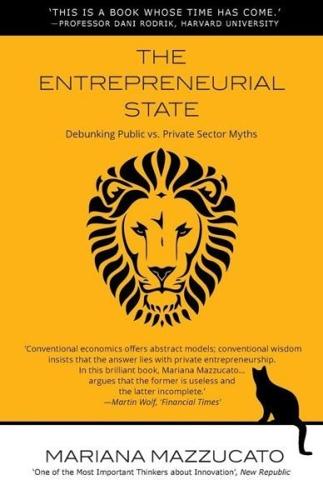
The Entrepreneurial State: Debunking Public vs. Private Sector Myths
by
Mariana Mazzucato
Published 1 Jan 2011
How many back then thought the Internet was a ‘foolish’ way to invest millions in taxpayer dollars? What is needed today is a ‘systems’ perspective, but one that is more realistic on the actual – rather than mythological – role of the individual actors, and the linkages between actors, within and along the risk landscape. It must also bridge, as stated earlier, the knowledge gap that exists to explain how State investments catalyse, influence and connect to the growth of business organizations on which we rely, ultimately, to deliver new technologies on a broad scale. It is, for example, unrealistic to think that the highly capital-intensive and high-risk areas in clean technology will be ‘led’ by venture capital, or ‘nudged’ by a small and unstructured green investment bank.

AI Superpowers: China, Silicon Valley, and the New World Order
by
Kai-Fu Lee
Published 14 Sep 2018
The terms refer to how involved an internet company becomes in providing goods or services. They represent the extent of vertical integration as a company links up the on- and offline worlds. When looking to disrupt a new industry, American internet companies tend to take a “light” approach. They generally believe the internet’s fundamental power is sharing information, closing knowledge gaps, and connecting people digitally. As internet-driven companies, they try to stick to this core strength. Silicon Valley startups will build the information platform but then let brick-and-mortar businesses handle the on-the-ground logistics. They want to win by outsmarting opponents, by coming up with novel and elegant code-based solutions to information problems.
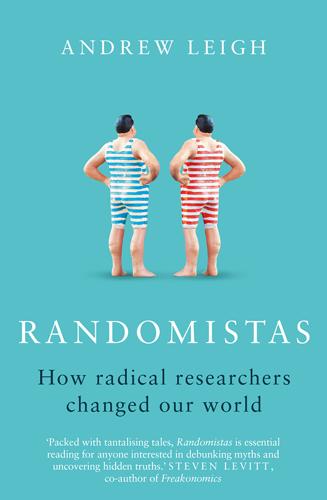
Randomistas: How Radical Researchers Changed Our World
by
Andrew Leigh
Published 14 Sep 2018
Evidence from a field experiment in Kenya’, American Economic Journal: Applied Economics, vol. 3, no. 1, 2011, pp. 1–34. 58These were reported to school students to be the infection rates from a nearby city (Kisumu), as distinct from the national rates. 59John Gapper, ‘Lunch with the FT: Esther Duflo’, Financial Times, 17 March 2012. 60Gapper, ‘Lunch with the FT’. 61Asimina Caminis, ‘Putting economic policy to the test’, Finance and Development, September 2003, pp. 4–7. 62Ian Parker, ‘The poverty lab’, New Yorker, 17 May 2010. 63Abdul Latif Jameel Poverty Action Lab, ‘Increasing test score performance’, undated, available at www.povertyactionlab.org. 64Innovations for Poverty Action, ‘Financial inclusion program brief’, 15 June 2016, available at www.poverty-action.org. 65One analysis found that if you took any two randomised trials in development, their confidence intervals would overlap approximately 83 per cent of the time: Eva Vivalt, ‘Heterogeneous treatment effects in impact evaluation,’ American Economic Review, vol. 105, no. 5, 2015, pp. 467–70. 66Paul Glewwe & Karthik Muralidharan, ‘Improving education outcomes in developing countries – evidence, knowledge gaps, and policy implications’ in Eric Hanushek, Stephen Machin & Ludger Woessman (eds), Handbook of the Economics of Education, Vol. 5, Amsterdam: North Holland, 2016, pp. 653–744. 67Shwetlena Sabarwal, David K. Evans & Anastasia Marshak, ‘The permanent input hypothesis: The case of textbooks and (no) student learning in Sierra Leone’, World Bank Policy Research Working Paper, vol. 7021, 2014. 68Jishnu Das, Stefan Dercon, James Habyarimana, et al., ‘School inputs, household substitution, and test scores’ American Economic Journal: Applied Economics, vol. 5, no. 2, 2013, pp. 29–57. 69Isaac Mbiti & Karthik Muralidharan, ‘Inputs, incentives, and complementarities in primary education: Experimental evidence from Tanzania’, unpublished working paper, 2015. 70Paul Glewwe, Michael Kremer & Sylvie Moulin.

What Patients Say, What Doctors Hear
by
Danielle Ofri
Published 1 Feb 2017
The more researchers, patients, and doctors I spoke to for this book, the more I realized that our current setup in medicine seems designed to thwart good communication. There are so many odds stacked against it: a patient in pain or consumed with worry, a doctor with way too many tasks for the given time, uneven power dynamics, stereotypes, racial and gender disparities, assumptions, knowledge gaps. Add in ever more complex illnesses, exploding amounts of data for each patient, rigid documentation requirements, and ever-changing insurance company labyrinths to battle, and it’s no wonder that a meaningful and well-understood conversation in the doctor’s office is rarer than a decent cup of coffee from the hospital cafeteria.
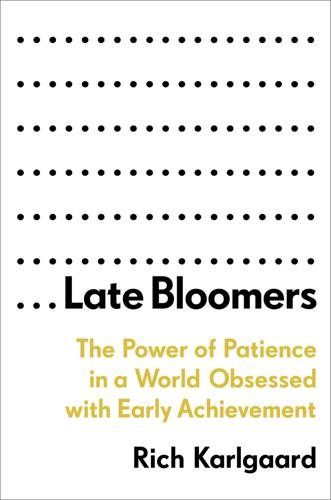
Late Bloomers: The Power of Patience in a World Obsessed With Early Achievement
by
Rich Karlgaard
Published 15 Apr 2019
I would process the meaning of this only later, but I can now see that Mom’s irrational mysticism and Dad’s status anxiety were forces of ignorance in an otherwise loving, nurturing family. My own late blooming is partially due to simply not knowing what I didn’t know at the time—and, really, had no reason know in my family’s house. Many of us grow up with similar knowledge gaps. To fully bloom, we must declare our independence from our family. That doesn’t mean we must reject their love, turn 180 degrees from their influence, or rebel against their expectations. It means only that we must reach our own conclusions about what does and does not support our blooming.

Private Equity: A Memoir
by
Carrie Sun
Published 13 Feb 2024
I told him how, with no real programming experience, I had learned Java and R and built, from scratch, a custom portfolio optimizer that we used for our quant-investment needs: back-tests, simulations, rebalancings. “Basically an in-house version of Barra,” I said. What’s Barra? he asked. It was then I realized how wide the knowledge gap was between fundamentally and quantitatively driven finance: here was an investor whom many had called a phenom, who did not know one of the industry-leading providers of optimizers and risk models. This was also the moment I realized I wanted to work for Boone, a billionaire of (relatively) low ego.
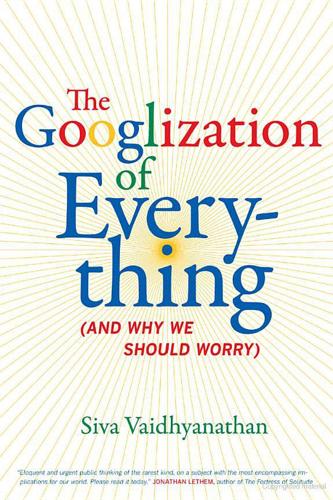
The Googlization of Everything:
by
Siva Vaidhyanathan
Published 1 Jan 2010
Second, the universal library will deepen our grasp of history, as every original document in the course of civilization is scanned and cross-linked. Third, the universal library of all books will cultivate a new sense of authority.”2 THE GOOGL IZAT I ON OF KN OW L E D GE 151 Kelly suggested that the linkages of text to text, book to book, page to page, and passage to passage will fill the knowledge gaps that have made certain people winners and others losers. “If you can truly incorporate all texts—past and present, multilingual—on a particular subject,” he wrote, “then you can have a clearer sense of what we as a civilization, a species, do know and don’t know. The white spaces of our collective ignorance are highlighted, while the golden peaks of our knowledge are drawn with completeness.
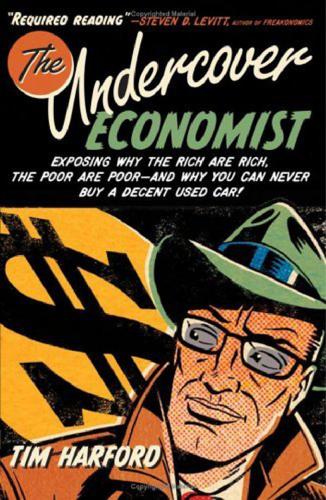
The Undercover Economist: Exposing Why the Rich Are Rich, the Poor Are Poor, and Why You Can Never Buy a Decent Used Car
by
Tim Harford
Published 15 Mar 2006
See also environmental and development, 198 issues; externality charges; and economic growth, 181 pollution and employment market, 117–18 and damages, 85–87 and nonmarket economies, 69–70 and driving, 84, 91–92 and poverty, 223, 229–30 environmental issues, 89–90, 91– and wages, 67 92, 98–100, 102–3, 214–21, 221 efficiency and government intervention, in economists’ terms, 55, 57 104–7 and fairness, 71–72, 73 impact on free markets, 135 and globalization, 215 and keyhole economics, 130 and government intervention, 90– and knowledge gaps, 95–96 91 and market failures, 80, 86 of markets, 67–68 measuring, 92 and planned economies, 243 and politics, 93, 108 and pricing, 58, 63 positive, 103–4 and scarcity, 58 pseudoexternalities, 105 and subsidies, 71–72 in public health projects, 131 and taxation, 71–72, 185 theory origins, 255n.

The New Harvest: Agricultural Innovation in Africa
by
Calestous Juma
Published 27 May 2017
Coffeaarabica regions in Ethiopia, parts of Uganda, Kenya, and most of Rwanda and Burundi will likely be affected in the future. One strategy is to plant shade trees to adapt to rising temperatures, but this will not address the root of the problem. In fact, “there is a pressing need to fill existing knowledge gaps in the coffee industry, and to develop science-based adaptation strategies to mitigate the impacts of climate change on coffee production.”17 Adapting agriculture to climate change will require the intensified application of science, technology, and innovation, focusing on specific crops. A similar situation is occurring in the cacao-producing regions of West Africa, where production is falling far short of demand.

The Big Nine: How the Tech Titans and Their Thinking Machines Could Warp Humanity
by
Amy Webb
Published 5 Mar 2019
When that work gets outsourced to others, our government leaders are absolved from pushing up their sleeves and familiarizing themselves with the intricacies of AI. They aren’t able to build up the institutional knowledge required to make good decisions. They just don’t have the lexicon, they don’t know the history, and they aren’t familiar with the key players. This lack of familiarity creates unforgivable knowledge gaps, which I’ve observed in meetings with senior leaders across multiple agencies, only some of which include the Office of Science and Technology Policy, General Services Administration, Department of Commerce, Government Accountability Office, State Department, Department of Defense, and Department of Homeland Security.
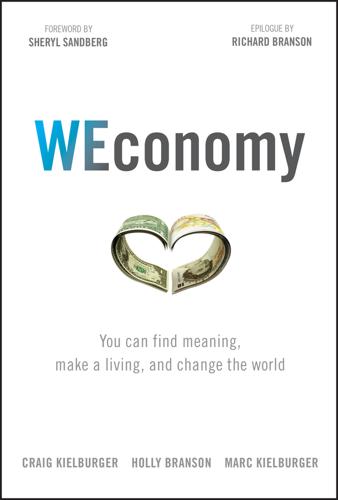
WEconomy: You Can Find Meaning, Make a Living, and Change the World
by
Craig Kielburger
,
Holly Branson
,
Marc Kielburger
,
Sir Richard Branson
and
Sheryl Sandberg
Published 7 Mar 2018
That's just one of more than 2,000 loans approved to date, boosting Britain's economy and sustaining a culture of entrepreneurship, encouraging young people to pursue their business ideas in a poor economic climate where youth unemployment is high. But StartUp doesn't just provide access to early capital; it offers dedicated mentorship, pairing loan recipients and Virgin mentors with the same devotion to compatibility as a high-end matchmaking service, identifying shared values and knowledge gaps. Virgin StartUp also offers a wide range of programs to help startups to grow and be sustained. These include: workshops (Doing Business with Big Business; Crowdfunding Boost), Masterclasses, networking events, competitions (Virgin StartUp Foodpreneurs), and accelerator programs. Virgin StartUp has supported some of the country's most innovative new ventures, especially in the food and beverage sector.
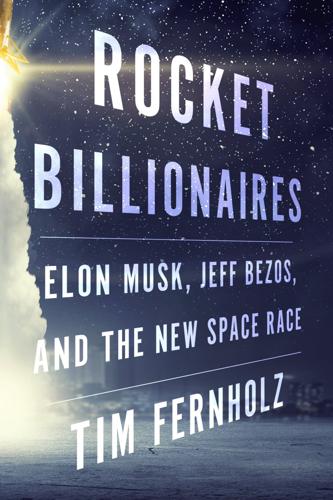
Rocket Billionaires: Elon Musk, Jeff Bezos, and the New Space Race
by
Tim Fernholz
Published 20 Mar 2018
“decisions on a launch architecture”: Rebecca Wright, “Interview with Michael Griffin,” NASA Oral History Project, September 10, 2007. to replace the space shuttle: Cristina Chaplain et al., “Agency Has Taken Steps Toward Making Sound Investment Decisions for Ares I but Still Faces Challenging Knowledge Gaps,” Government Accountability Office, October 2007, GAO-08-51. asking friends to sign it: Seth Borenstein, “NASA Chief’s Wife: Don’t Fire My Husband,” Associated Press, January 1, 2009. to protect the program: Robert Block and Mark K. Matthews, “NASA Chief Griffin Bucks Obama’s Transition Team,” Orlando Sentinel, December 11, 2008.
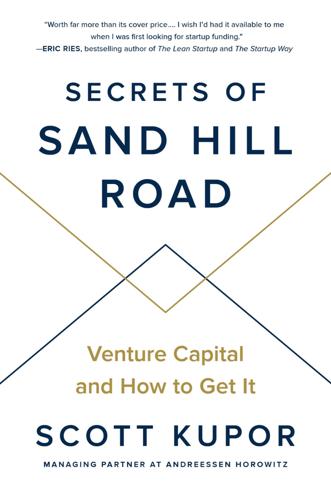
Secrets of Sand Hill Road: Venture Capital and How to Get It
by
Scott Kupor
Published 3 Jun 2019
Though it can be tempting, particularly in smaller startups, for the VC board member to engage more closely with the CEO’s executives, this can inadvertently undermine the CEO’s authority and create management challenges for the startup. And as anyone who has been in a startup before knows, there is a huge knowledge gap between board members and the CEO and other members of the executive team, stemming from the fact that the board members simply aren’t in the company’s office every day. Without the specific understanding of which employees are capable of doing what, and which product features are most important to the customers—among other things—board members simply aren’t immersed enough in the company to meaningfully drive priorities for the business.

Calling Bullshit: The Art of Scepticism in a Data-Driven World
by
Jevin D. West
and
Carl T. Bergstrom
Published 3 Aug 2020
I worry about it all the time myself…” Don’t overemphasize the myth. Familiarity increases the stickiness of myth. If a reference to the myth is necessary, precede with explicit warnings. Some research suggests that people’s beliefs in misinformation can be strengthened if you reiterate the myth before you debunk it. Fill in knowledge gaps with alternative explanations. It is not enough to simply debunk a myth; you need to replace it with an alternative account. People don’t like incomplete stories in which events lack explanation. Your argument against a myth may seem convincing now, but if you don’t replace it with a new narrative, your audience may fall back on the same old misinformation in the future.
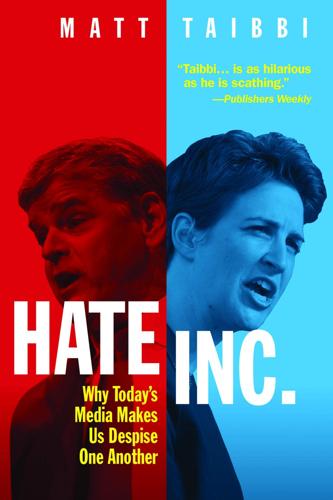
Hate Inc.: Why Today’s Media Makes Us Despise One Another
by
Matt Taibbi
Published 7 Oct 2019
You can’t fix what you can’t see. 12. HOW WE TURNED THE NEWS INTO SPORTS The biggest taboo in American media has nothing to do with race, gender, or class. It involves the news itself. Ever notice no one ever says, “Hell if I know” on a cable news show? Despite the fact that most media figures have huge knowledge gaps about the news (which, after all, is the set of all things on Earth), we’re trained to offer opinions even when we have no clue. Part of this has to do with the internal logic of news media, at its core an entertainment product. It triggers suspension of disbelief if someone on air admits to not knowing the history of Kurd-Turk relations, or the hierarchy of Venezuelan socialism, or the rules of a government shutdown.
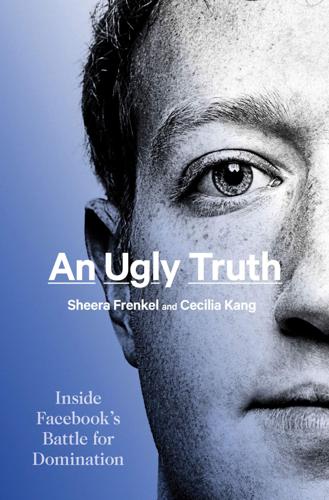
An Ugly Truth: Inside Facebook's Battle for Domination
by
Sheera Frenkel
and
Cecilia Kang
Published 12 Jul 2021
The app was for messaging, not for emailing, Zuckerberg explained, and all messages were encrypted. Four hours in, a lawmaker asked if Facebook listened in on voice calls to collect data for advertising. Others tripped up on jargon for how terms of service were used and how data was stored. As some of the lawmakers exposed their deep knowledge gap in technology, the spotlight was shifting from Facebook’s harmful business model to America’s Luddite elected officials. “Lawmakers seem confused about what Facebook does—and how to fix it,” a headline from Vox read.28 The hearings would become fodder for late-night television hosts Jimmy Kimmel and Stephen Colbert, who ran video reels on members’ bad tech questions.29 Regulators tweeted that there needed to be new divisions within Congress and regulatory agencies to bolster tech expertise.
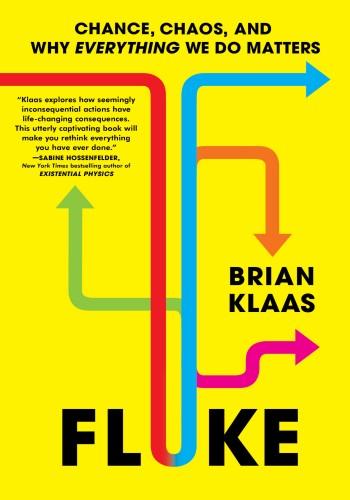
Fluke: Chance, Chaos, and Why Everything We Do Matters
by
Brian Klaas
Published 23 Jan 2024
For millennia, surprisingly few systematic attempts were made to precisely measure or quantify uncertainty and risk. Perhaps that partly explains why the ancient Greeks, who worshipped a pantheon of gods, articulated extremely sophisticated thoughts about just about everything in the natural world, but failed to develop even the most basic math of probability. This knowledge gap was perplexing because the ancient Greeks relished games of chance. The anklebones and knucklebones of hooved animals (known as astragali) have been dated to as early as 5,000 BC in Greece, where they were used as a precursor to dice. People were contemplating odds, even if they didn’t create a systematic logic for them.
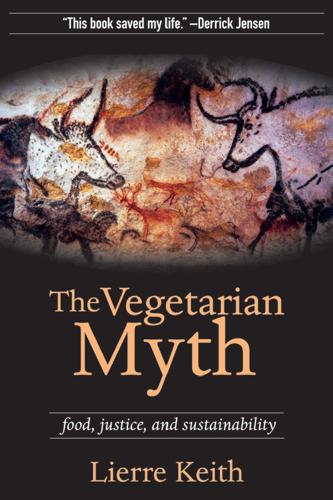
The Vegetarian Myth: Food, Justice, and Sustainability
by
Lierre Keith
Published 30 Apr 2009
I was taught to look both ways before crossing the street. I learned how to read when I learned to talk. I was even in on the secret of where babies came from. I remember at five earnestly explaining the word “vagina” to another little girl. I didn’t know the word “empowerment,” but that was my impulse. But food? That was a knowledge gap I didn’t close until I was almost forty, and only after battling myself into emotional, physical, and ethical exhaustion. So I had twenty-five chickens. The dead insects I could still play moral hide-and-seek with. But twenty-five hens meant twenty-five dead roosters. Here’s why. Animals may reproduce in 50/50 sex ratios but they don’t necessarily live that way.
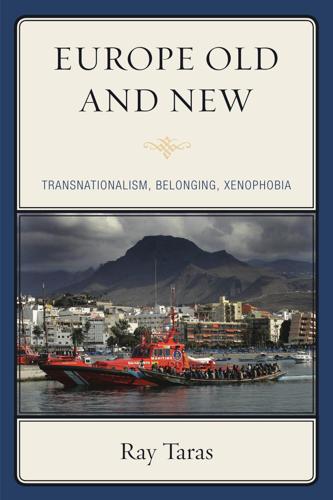
Europe old and new: transnationalism, belonging, xenophobia
by
Ray Taras
Published 15 Dec 2009
As one esoteric example, Latvia has become a favorite destination for people from England because they can throw cheap stag and hen parties there—not because they are Latviaphiles. Despite, or perhaps precisely because of, such travel, it is sometimes said that old Europe still knows little about its new counterpart while eastern Europeans for many reasons have had to learn about the advanced western states. A knowledge gap may exist, affecting perceptions of each other. Constructing a transnational home where both eastern and western Europeans feel they belong faces many obstacles. Institutional engineering is a start, but crafting cognitive, cultural, and normative structures is important for the longer-term success of such a project.
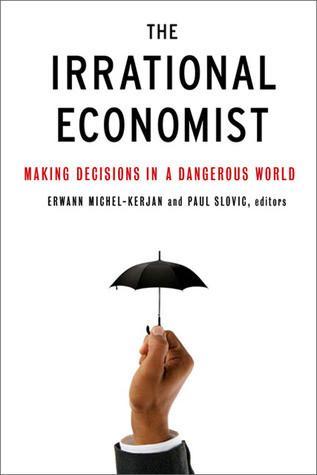
The Irrational Economist: Making Decisions in a Dangerous World
by
Erwann Michel-Kerjan
and
Paul Slovic
Published 5 Jan 2010
The controversy that developed following the publication of the Stern Report was focused on how to deal with the tradeoff of the cost of investments to mitigate climate change effects against the still very uncertain benefits associated with these investments. The debate here is clouded by huge uncertainties, large time lags between actions and effects, and massive complexities and knowledge gaps in the underlying science. With respect to legitimation, these characteristics imply difficulties both for validation of policy actions as well as for individual choices of citizens about where they will live, how much energy they should consume, and many other decisions that until now have largely been dealt with by the market or the government.
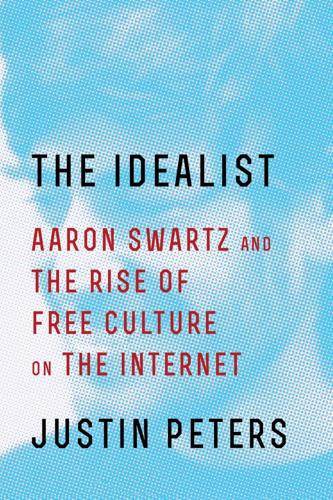
The Idealist: Aaron Swartz and the Rise of Free Culture on the Internet
by
Justin Peters
Published 11 Feb 2013
But the resources were not equally distributed. “Good libraries are not available to all,” the curators observed. “More people will need more knowledge.” Mechanized libraries, they submitted, would facilitate the frictionless sharing of information, which would in turn help close the international knowledge gap. Upon leaving Library/USA, visitors were presented with a UNIVAC printout titled “Challenge to Greatness,” which was supposed to be “symbolic of the continuing challenge to increase each person’s free access to sources of information.” One can hardly think of a better closing image with which to leave pavilion-goers—a better summation of the installation’s themes, of one way the country might meet the challenges of tomorrow—than this peek at what could only be considered the library of the future.

Genius Makers: The Mavericks Who Brought A. I. To Google, Facebook, and the World
by
Cade Metz
Published 15 Mar 2021
Since the match in Korea, DeepMind had spent months improving the machine’s design, and AlphaGo had spent many more playing game after game against itself, learning entirely new skills through digital trial and error. Hassabis was confident the machine was now immune to the kind of sudden meltdown that arrived during the fourth game in Korea, when Lee Sedol, with Move 78, exposed a gap in its knowledge of the game. “A big part of what we were trying to do with the new architecture was close the knowledge gap,” Hassabis said. The new architecture was also more efficient. It could train itself in a fraction of the time, and once trained, it could run on a single computer chip (a Google TPU, naturally). Though Hassabis didn’t exactly say so, it was clear, even then, before the first move of the first game, that the nineteen-year-old Ke Jie had no chance of winning.
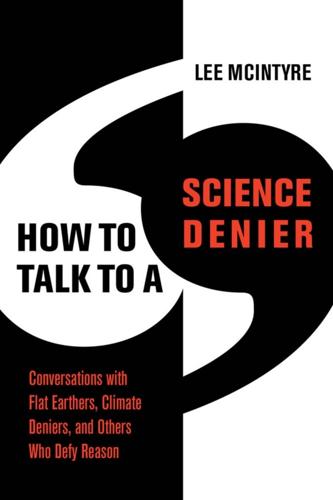
How to Talk to a Science Denier: Conversations With Flat Earthers, Climate Deniers, and Others Who Defy Reason
by
Lee McIntyre
Published 14 Sep 2021
Krimsky, GMOs Decoded, 73, 107. 93. Krimsky, GMOs Decoded, 74–75. 94. Kriimsky, GMOs Decoded, 75. 95. Krimsky, GMOs Decoded, 79. 96. Note though that 12 percent dissent (on GMOs) is not the same as 1 percent (on climate change). The question of consensus is not merely one of a public knowledge gap. Indeed one might wonder: if 12 percent of scientists doubt the safety of GMOs, is there really a consensus? Yet even here, skepticism is allowed about the narrow remaining areas of debate, but denialism is not. 97. H. J. Mai, “U.N. Warns Number of People Starving to Death Could Double Amid Pandemic,” NPR, May 5, 2020, https://www.npr.org/sections/coronavirus-live-updates/2020/05/05/850470436/u-n-warns-number-of-people-starving-to-death-could-double-amid-pandemic. 98.
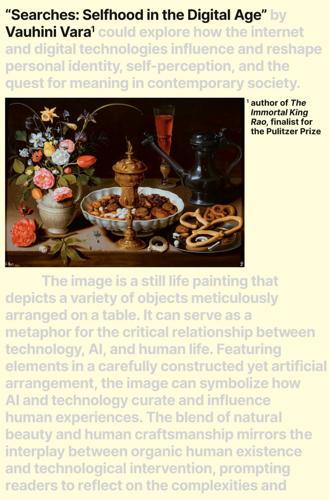
Searches: Selfhood in the Digital Age
by
Vauhini Vara
Published 8 Apr 2025
* * * — Shoshana Zuboff has warned that big tech companies’ unequal access to knowledge about people is facilitating an “epistemic coup” in four stages: first, corporations extract our information and turn it into behavioral data that they declare their property; second, by closely guarding this property, they create a gap between our knowledge and theirs; third, bad actors take advantage of the knowledge gap and profit-driven algorithms to amplify corrupt information, poisoning our discourse and politics; fourth—the phase Zuboff believes is coming next if we don’t prevent it—the corporations institutionalize their dominance at a grand scale through mass behavioral modification. Roger McNamee, who has gone from being one of Zuckerberg’s and Sandberg’s biggest supporters to one of their most vocal critics, has credited Zuboff with having helped him understand the industry’s extractive dynamics.

Political Ponerology (A Science on the Nature of Evil Adjusted for Political Purposes)
by
Andrew M. Lobaczewski
Published 1 Jan 2006
This will require abandoning some traditional customs of political life which allowed human emotions and egoism to play too great a role. Creative reasoning has become the sole and necessary solution, since it determines real data and finds novel solutions without losing the ability to act under real-life conditions. The absence of such prior constructive effort would lead both to knowledge gaps about the reality to be operated in and to a shortage of people with the crucial preparation needed for creating new systems. Regaining the right to decide one’s own fate, particularly for a nation now affected by pathocracy, would be improvisation, which is expensive and dangerous. Violent disputes among the adherents of various structural concepts which may often be unrealistic, immature, or outdated because they have lost their historical significance in the meantime, may even cause a civil war.
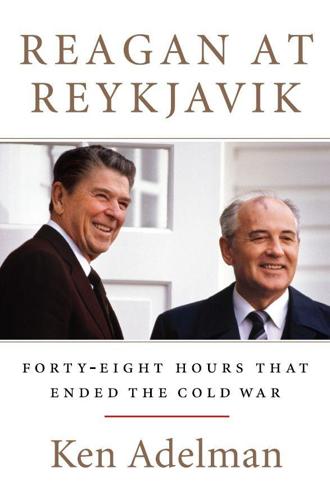
Reagan at Reykjavik: Forty-Eight Hours That Ended the Cold War
by
Ken Adelman
Published 5 May 2014
But that isn’t what comes across in the record. Reagan knew enough about arms control to make his arguments adeptly. He made the case for SDI providing protection, not just against each other’s nuclear arsenal but against another “madman like Hitler,” who would seek nuclear weapons. In short, there was no knowledge gap or information gap between the two leaders. The men who should have known more—Secretary of State Shultz and Foreign Minister Shevardnadze—contributed little of substance to this, or any other session. Their occasional interjections were organizational, and even these stabs at being helpful were unsuccessful.
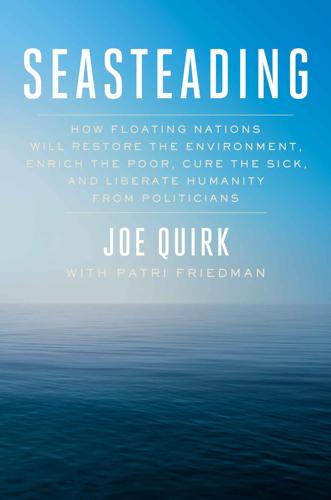
Seasteading: How Floating Nations Will Restore the Environment, Enrich the Poor, Cure the Sick, and Liberate Humanity From Politicians
by
Joe Quirk
and
Patri Friedman
Published 21 Mar 2017
“Wong’s version—with 100 percent local ingredients—is a winner: the Kona kampachi is satisfyingly fatty.” Diesel is the greatest source of greenhouse gases for the fishing industry: Robert W. R. Parker and Peter H. Tyedmers, “Fuel Consumption of Global Fishing Fleets: Current Understanding and Knowledge Gaps,” Fish and Fisheries 16, no. 4 (December 2015): 686–96, http://onlinelibrary.wiley.com/doi/10.1111/faf.12087/abstract. (NOAA) conducted an environmental assessment (EA) of the Velella Project: National Oceanic and Atmospheric Administration National Marine Fisheries Service Environmental Assessment (March 17, 2011), www.fpir.noaa.gov/Library/SFD/NMFS%20PIRO%20Special%20Permit%20Kona%20Blue%20Draft%20Environmental%20Assessment%20(March%202011).pdf.
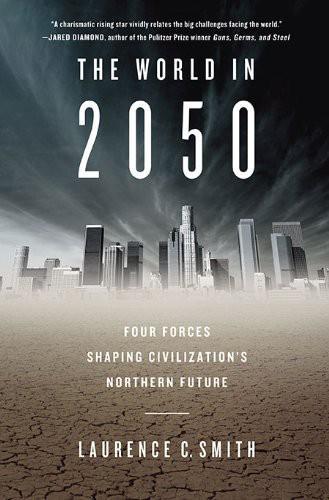
The World in 2050: Four Forces Shaping Civilization's Northern Future
by
Laurence C. Smith
Published 22 Sep 2010
If soils stay wet (as might be expected from climate model predictions of increased northern precipitation), then microbes will release it as methane, which is twenty-five times more potent a greenhouse gas than carbon dioxide. Given all these uncertainties, our current generation of computer models contain significant knowledge gaps. I’d wager we have twenty years’ work ahead of us before a solid scientific consensus can be reached on what will happen to this big mess of carbon as it defrosts.509 We do know this very same landscape switched on to become a major source of greenhouse gas once before—at the end of the last ice age, when northern peatlands first began to form.
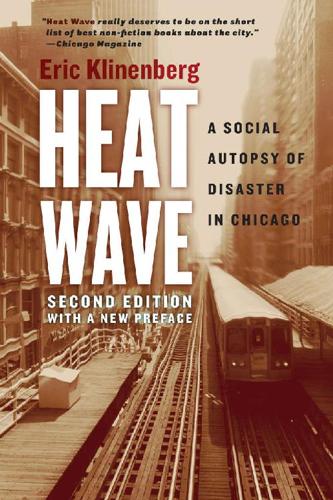
Heat Wave: A Social Autopsy of Disaster in Chicago
by
Eric Klinenberg
Published 11 Jul 2002
Hochschild, in fact, had argued that her subjects were interesting precisely because they were not representative of most seniors, while the others had simply avoided the question.3 The books had done the important work of illustrating the conditions under which it is possible to age well, but they said little about the fate of the people deprived of such opportunities. Older people who live as shut-ins and isolates are no more typical than the seniors who appear in these popular texts—but their absence in the literature leaves a knowledge gap that the Public Administrator’s files help to fill. Coles, whose book Old and On Their Own is the most recent of these works and the only one to focus on senior citizens living alone, produced a heartwarming collection of photographic and written portrayals of older Americans. Their success, as he describes it, is that they manage to “hold on—to maintain considerably more than a semblance of their privacy, their independence, their personal sovereignty, their ‘home rule’” while living alone.4 Coles presents the faces and stories of the seniors who are struggling to get through the daily challenges of aging alone but who, in the end, are making it.
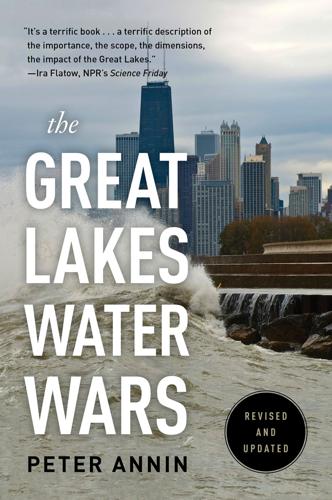
The Great Lakes Water Wars
by
Peter Annin
Published 15 Jun 2018
In the eastern Great Lakes Basin, states like New York, Pennsylvania, and Ohio were already parties to multiple water compacts, but in the western Great Lakes Basin, states like Minnesota, Wisconsin, and Michigan were much less familiar with the process. The Great Lakes St. Lawrence Governors and Premiers was responsible for helping to fill that knowledge gap, and staff there served a quarterback-like role on outreach and education as the Compact wound its way through sixteen different legislative bodies in the eight Great Lakes states. David Naftzger and Peter Johnson, who hold the top two positions at the Governors and Premiers organization, hit the road to meet with legislators, testify at hearings, and talk in minute detail with supporters and detractors alike about how the Compact would and would not impact Great Lakes water policy.
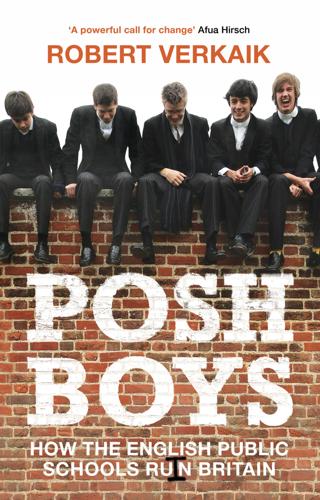
Posh Boys: How English Public Schools Ruin Britain
by
Robert Verkaik
Published 14 Apr 2018
This suggests that the quality of teaching isn’t any better in the private sector. Parents are really paying for smaller classes, a nannying support service and a place in the privilege network. Private school parents recently complained that the hot-housing of pupils to achieve good exam marks left their children with ‘knowledge gaps’ because there was no time for reading around the subjects.26 Recent school league tables have also seen private schools lose out to better-performing state schools. The 2017 Sunday Times school league tables saw fifteen private schools, including famous names such as Cheltenham Ladies’ College and London’s Godolphin & Latymer ‘crash’ out of the elite table.

Finding the Mother Tree: Discovering the Wisdom of the Forest
by
Suzanne Simard
Published 3 May 2021
But seeing an ocean of alder from the roadside, even if many pines were poking through, was all foresters needed to justify a chemical assault or a literal hack job with saws or clippers. But to what avail? No one knew whether this weeding was improving plantation growth. My experiment aimed to help fill that knowledge gap. I wanted to quantify the competitive effect of the alders and associated plants on the pines. Even more interesting to me was whether the native shrubs might actually collaborate with the pines to help them connect with the soil and create a healthy forest community. To see how—and if—alder might interfere with pine, I had to reduce the abundance of the shoulder-height shrubs to different densities, including total elimination in some plots.
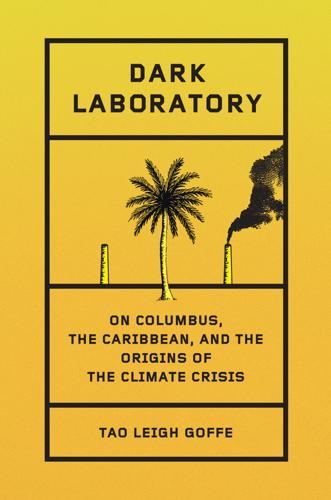
Dark Laboratory: On Columbus, the Caribbean, and the Origins of the Climate Crisis
by
Tao Leigh. Goffe
Published 14 Mar 2025
Vincent, whose eponymous peak bears a French name, saw the tragic eruption of La Soufrière in 2021 transpire without much notice in the nearby United States. When I taught a graduate class at Cornell University’s Architecture School on Black and Indigenous Metropolitan Ecologies, none of my students had heard about the devastating eruption. We talked about this knowledge gap and the boundaries of climate aid. BBC global coverage showed the nation—its former colony—blanketed in ash. The carcinogenic impact is untold, and, tragically, the epigenetic effect of the sulfur and noxious fumes will continue to unveil itself. Home to one of the largest Afro-Indigenous communities, the twin island nation St.

Traders, Guns & Money: Knowns and Unknowns in the Dazzling World of Derivatives
by
Satyajit Das
Published 15 Nov 2006
You probably haven’t got the faintest idea of what a double knockout currency option with rebate is or does – a known unknown. What should you pay for this particular item? Definitely, unknown unknown. Derivatives are similar to a Manolo Blahnik or Jimmy Choo pair of women’s shoes. The salesperson’s job is to bridge this knowledge gap – well, not really. As long Did the Indonesians really as the client trades with you, do you really know what they had care whether your client understands what they are doing? Did the Indonesians really traded? Did the traders who know what they had traded? Did the had traded with them care? traders who had traded with them care?
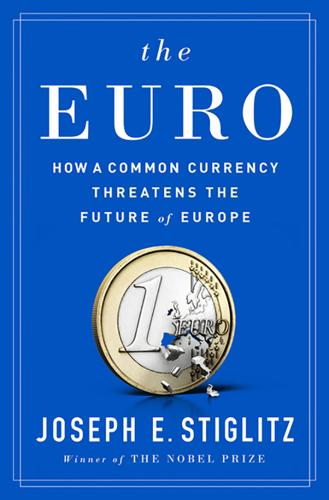
The Euro: How a Common Currency Threatens the Future of Europe
by
Joseph E. Stiglitz
and
Alex Hyde-White
Published 24 Oct 2016
They realized that what separates more advanced countries from the less advanced is a gap in knowledge, and knowledge does not, on its own, flow freely.33 Markets in knowledge are not well described by the standard economic model; economies in which knowledge is important are not, in general, efficient: markets invest too little, and often in the wrong direction.34 And, markets, on their own, do not necessarily eliminate the knowledge gap. Indeed, it has been well known that increasing returns to scale associated with innovation (an investment in R&D yields disproportionately greater expected returns the greater the sales) gives big firms an advantage over small firms. There can be economies of scope, where research in one area has benefits for others and spillover from one firm to another, reflected in clustering.
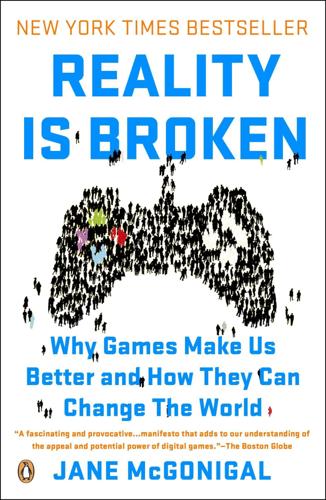
Reality Is Broken: Why Games Make Us Better and How They Can Change the World
by
Jane McGonigal
Published 20 Jan 2011
In 2008, New York University professor and Internet researcher Clay Shirky sat down with IBM researcher Martin Wattenberg and tried to work out exactly how much human effort has gone into making Wikipedia. They looked at the total number of articles and edits, as well as the average article length and average time per edit. They factored in all of the reading time required to find knowledge gaps and spot errors, and all of the hours of programming and ongoing community management required to make those edits hang together coherently. After a lot of clever math, they worked out the following estimate:If you take Wikipedia as a kind of unit, all of Wikipedia, the whole project—every page, every edit, every talk page, every line of code, in every language that Wikipedia exists in—that represents something like the accumulation of 100 million hours of human thought....

Mastering Private Equity
by
Zeisberger, Claudia,Prahl, Michael,White, Bowen
,
Michael Prahl
and
Bowen White
Published 15 Jun 2017
The provisions of the term sheet are then formalized in a share subscription agreement, and in an amended or redrafted shareholders’ agreement plus articles of association of the target company.12 First-time entrepreneurs are well advised to carefully review the terms under negotiation before signing a term sheet, especially as earlier investment rounds set the ground rules for future fundraising, potentially complicating that process. Guidance from an experienced entrepreneur or a friendly venture partner can help overcome the knowledge gap between start-up founders and seasoned VC investors. The provisions in a term sheet can be divided into economic terms and control terms. Economic Terms Economic terms set out the price of shares, the investment amount and the rights and obligations of the newly created preferred share class.
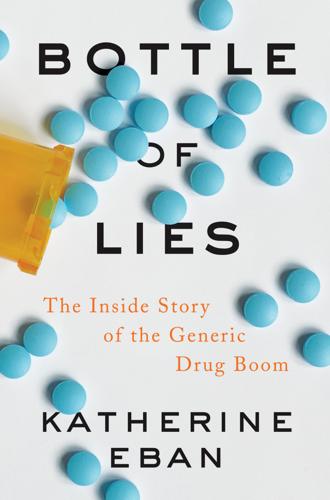
Bottle of Lies: The Inside Story of the Generic Drug Boom
by
Katherine Eban
Published 13 May 2019
They assumed that faraway companies were making them with no compromise to quality, in large part because the FDA claimed it was so. But the Indian companies Baker had caught were aiming to make the lowest-quality drugs they could get away with, to make the biggest profits. Without a doubt, the companies could have made perfect medicine. There was no knowledge gap. Their equipment was first-rate. The difference was simply cost. Exacting controls cost about 25 percent more, according to some industry estimates. To avoid significant up-front costs without a guarantee that their drugs would be approved, the companies pretested everything in secret labs tucked within their manufacturing plants.
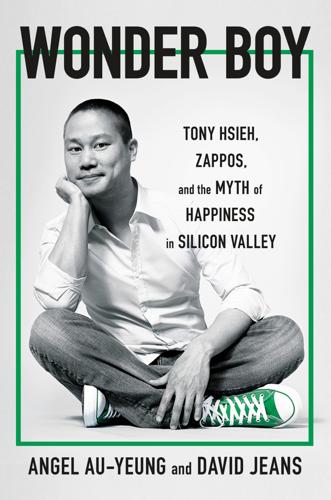
Wonder Boy: Tony Hsieh, Zappos, and the Myth of Happiness in Silicon Valley
by
Angel Au-Yeung
and
David Jeans
Published 25 Apr 2023
His two-bedroom loft had an open-plan kitchen and dining room, framed by floor-to-ceiling windows overlooking the neighborhood. But unlike Tony, who likely knew how to code better than all the engineers at Zappos combined, Andy did not bring any software engineering expertise to his work. There was a clear knowledge gap, and some of his employees noticed. One worker recalled arriving at Andy’s loft and seeing him frantically scribbling mathematical equations on the windows overlooking the industrial streets of SoMa. Taking a closer look at the figures, the employee realized they were nonsensical formulas and asked Andy what he was doing.
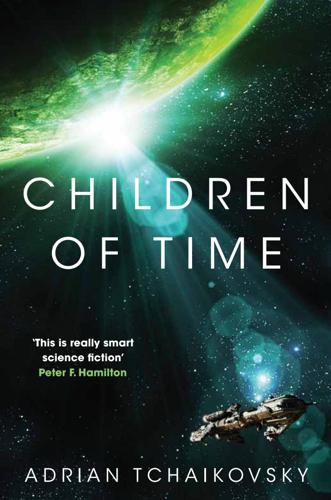
Children of Time
by
Adrian Tchaikovsky
Published 31 May 2015
Aside from Vitas’s own science team, most of Key Crew were occupied on the station, and almost everyone here had last opened their eyes way back on Earth, so could know nothing of Kern or the green planet or its terrible inhabitants save what they were told, or from what unclassified material was available in the Gil’s records. Whilst it was true that a lot of them were young, it was the knowledge gap that made him feel old, as though he had been awake for centuries longer than they, rather than just a few strung-out days passed in another solar system. Guyen had found a place at the back, keeping similarly aloof, and now Vitas stepped forward, precise and fastidious, looking over her audience as though not entirely sure she had come into the right room.
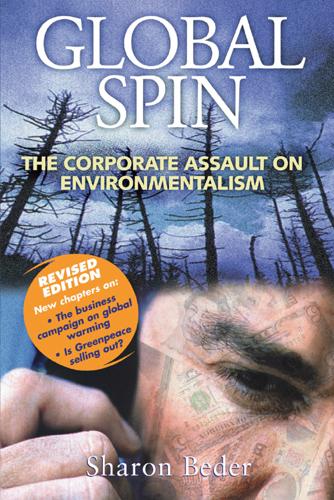
Global Spin: The Corporate Assault on Environmentalism
by
Sharon Beder
Published 1 Jan 1997
The Washington Post reported that “the problem appears to be heading toward solution before [researchers] can find any solid evidence that serious harm was or is being done.”24 This isn’t the first time that the media has serviced those seeking to discredit ozone depletion theories. In the 1970s, when the connection between fluorocarbons from aerosol spray cans and ozone depletion were first made: The aerosol industry launched a PR campaign that emphasized ‘knowledge gaps’ instead of gaps in the Earth’s atmospheric shield. Industry press releases formed the basis for articles in numerous newspapers and magazines that questioned the ozone depletion ‘theory’, enabling aerosol spray manufacturers to buy additional time before their product was banned. In this case, industry profits were deemed more important than the prevention of skin cancer.25 This time, think-tanks and their scholars have provided the Republicans in Congress with the rhetoric to oppose a more general CFC phaseout.
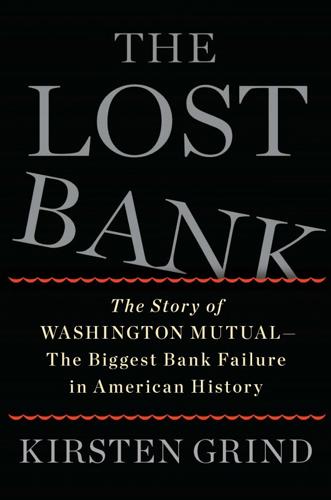
The Lost Bank: The Story of Washington Mutual-The Biggest Bank Failure in American History
by
Kirsten Grind
Published 11 Jun 2012
WaMu’s reach stretched far, and its employees are scattered throughout the world, so I also conducted interviews, often via Skype, and at odd hours of the day and night, with sources in multiple other countries. When I embarked on this project full-time in the summer of 2010, I discovered a large knowledge gap related to the financial crisis. On the one hand, many people I talked with—namely those in some way related to the banking, finance, mortgage, or real estate industries—had been bombarded with information about the inner workings of a subprime security and unusual mortgages. Already a flurry of books and long articles had come out that helped explain many of these concepts.
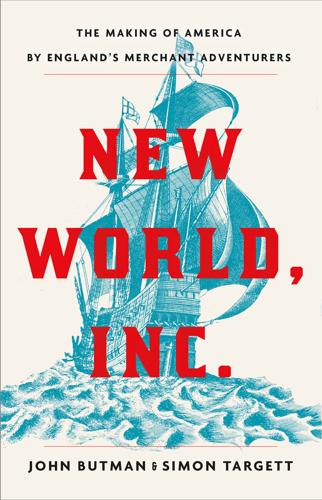
New World, Inc.
by
John Butman
Published 20 Mar 2018
The Decades of the New World, by Peter Martyr d’Anghiera, an Italian scholar in the Spanish court, chronicled the history of Spain and Portugal’s discoveries—but it had first been published in 1516. Another Italian, Giovanni Batista Ramusio, who was based in Venice, published the first volume of his Navigations & Voyages, a collection of travelers’ tales, in 1550—but it was not readily available to English readers. Filling the knowledge gap was a library of popular travel narratives, chief among them Marco Polo’s Travels. Another popular title was The Eastern Parts of the World Described, by Odoric of Pordenone, a Franciscan monk who journeyed from Italy into Iran, India, China, and Russia in the 1300s. Friar Odoric marveled at the abundance of pepper available on India’s southwestern Malabar coast and wrote that the spice “groweth on plants which have leaves like ivy.”25 He described several Chinese cities, including Censcalan, now the massive industrial city of Guangzhou, which, even in his day, was a sprawling metropolis “as big as three Venices.”
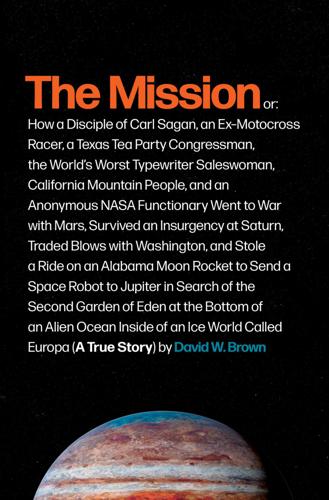
The Mission: A True Story
by
David W. Brown
Published 26 Jan 2021
He was there that day on loan from the University of Colorado, where he was an assistant professor, to advise the agency on JIMO—the Jupiter Icy Moons Orbiter—and what could be achieved from further expeditions to the Jovian worlds. Pappalardo was part of the mission’s science definition team, an ad hoc group of scientists who kneaded the knowns and knowledge gaps of a celestial object or system and determined the scientific objectives that should thus drive a prospective mission there. The simple ability to go somewhere started conversations, but before the National Aeronautics and Space Administration would pay engineers to spark blowtorches and build spaceships, there had to be a reason, some overriding and scientifically compelling purpose beyond Because It’s There.

Grand Transitions: How the Modern World Was Made
by
Vaclav Smil
Published 2 Mar 2021
The Thirty Years’ War. London: Routledge and Kegan Paul. Parker, G. 1996. The Military Revolution: Military Innovation and the Rise of the West, 1500–1800. Cambridge: Cambridge University Press. Parker, R.W.R. and P.H. Tyedmers. 2015. Fuel consumption of global fishing fleets: current understanding and knowledge gaps. Fish and Fisheries 16:684–696. Pasinetti, L. 1981. Structural Change and Economic Growth. Cambridge: Cambridge University Press. Pauly, D. 2009. Beyond duplicity and ignorance in global fisheries. Scientia Marina 73:215–224. Pellenc. 2019. A new vision of wine growing. https://pellenc.com/agri/?

Order Without Design: How Markets Shape Cities
by
Alain Bertaud
Published 9 Nov 2018
The Chinese now advocate adopting market mechanism to allocate land because: • it sends strong signals through prices when land is underused or the use is unsuitable for its location; • it provides a strong incentive to users to use as little land as possible in areas where there is strong demand, in particular in areas well served by transport networks; and • it stimulates innovation in construction: without land prices, there would have been no skyscrapers, no steel frame structures, and no elevators. A Channel of Communication Is Needed between Urban Planners and Urban Economists Do I exaggerate the knowledge gap that exists between urban planning practices and urban economics? Even today, a first encounter at mid-career between an experienced urban planner and an economist could still happen. But unfortunately, most of the time the economist and the planner are likely to talk past each other, because they are not familiar with the vocabulary and professional jargon specific to the other’s field.
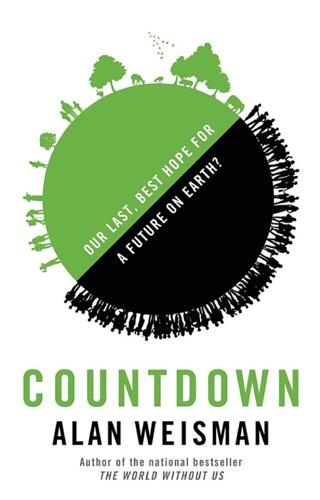
Countdown: Our Last, Best Hope for a Future on Earth?
by
Alan Weisman
Published 23 Sep 2013
The paper they published in the journal Nature—versions also appeared in Ecology and Society and in Scientific American—identified nine planetary boundaries, beyond which the world would enter a phase shift that could prove cataclysmic for humanity. They acknowledged that, while based on the best science available, these were “rough, first estimates only, surrounded by large uncertainties and knowledge gaps” that will require major scientific advancements to fill. The nine boundaries were climate change, biodiversity loss, disruption of global nitrogen and phosphorus cycles, ozone depletion, ocean acidification, freshwater use, changes in land use, chemical pollution, and atmospheric particulates.
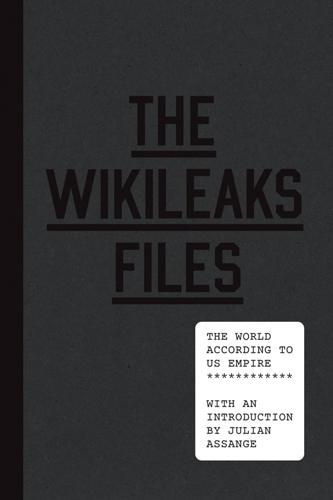
The WikiLeaks Files: The World According to US Empire
by
Wikileaks
Published 24 Aug 2015
It was left to WikiLeaks to bring to light the “Human Terrain Team Handbook”—unclassified but kept from the public—with its description of who makes up those teams and what they are tasked with in carrying out counter-insurgency war. Official members of the military or not, their task is clear: to strengthen the US army’s military operations: Human Terrain Teams (HTTs) are five- to nine-person teams deployed by the Human Terrain System (HTS) to support field commanders by filling their cultural knowledge gap in the current operating environment and providing cultural interpretations of events occurring within their area of operations. The team is composed of individuals with social science and operational backgrounds that are deployed with tactical and operational military units to assist in bringing knowledge about the local population into a coherent analytic framework and build relationships with the local power-brokers in order to provide advice and opportunities to Commanders and staffs in the field

Thank You for Being Late: An Optimist's Guide to Thriving in the Age of Accelerations
by
Thomas L. Friedman
Published 22 Nov 2016
Together, they created an intelligent assistant for anyone who wants to improve their SAT scores to get into college. They not only offer free SAT prep—so you don’t have to pay a small fortune to some private test prep service to get your kid into college—but they also created an amazing practice platform to help students fill their knowledge gaps. The system works like this, explained Stefanie Sanford of the College Board: In tenth or eleventh grade you take the practice SAT, known as the PSAT. And let’s say, for instance, you scored 1060 out of 1600 on English and math. Your results are fed into a computer, which, using AI and big data, then spits out a message: “Tom, you did really well, but you need some work on fractions.
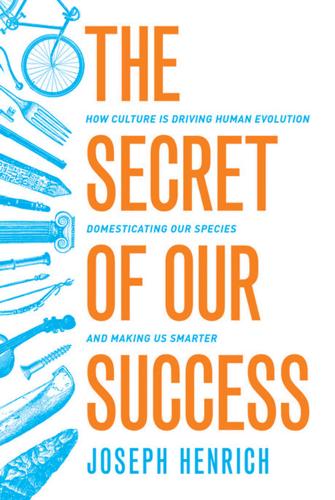
The Secret of Our Success: How Culture Is Driving Human Evolution, Domesticating Our Species, and Making Us Smarter
by
Joseph Henrich
Published 27 Oct 2015
Because of the combination of our powerful cultural learning and our sociality, information in the form of ideas, tools, practices, insights, and mental models can flow among individuals, recombine with other such information, and gradually improve as the selective filters of human learning, reproductive success, and intergroup competition toss some stuff on the trash heap of history and push other stuff onward to the next generation. Unique feats of genius are rare, since once the tectonic forces of cumulative cultural evolution have closed the knowledge gap to a point where one person can step across, intellectual histories show that multiple people often independently manage to take that step.7 I illustrated the importance of the size and social interconnectedness of collective brains in Tasmania, Northern Greenland, and Oceania as well as in the laboratory.
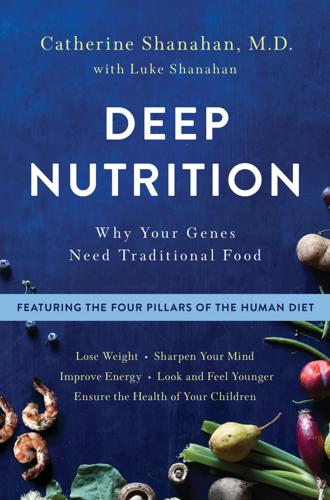
Deep Nutrition: Why Your Genes Need Traditional Food
by
Catherine Shanahan M. D.
Published 2 Jan 2017
Two things I learned about nutrition in medical school were that saturated fat raises cholesterol levels, and that cholesterol is a known killer. Who was right, the American Medical Association—whose guidelines are used to teach medical students—or John (Fire) Lame Deer? This was how I began to close the knowledge gap that years ago had derailed me from pursuing further studies of the fundamentals of disease. To determine the best dietary stance, I would look at all the necessary basic science data (on free radicals, fatty acid oxidation, eicosanoid signaling, gene regulation, and the famous Framingham studies), which, fortunately, I had the training to decipher.

After Tamerlane: The Global History of Empire Since 1405
by
John Darwin
Published 5 Feb 2008
Europeans were uniquely progressive, it was variously claimed, because of their physical, social or religious evolution. This was the charter of their ‘race supremacy’. Last but not least, Greater Europe’s expansion into Afro-Asian lands too remote or resistant in earlier times seemed a tribute to its scientific and technological primacy. The ‘knowledge gap’ between Europeans and (most) others looked wider, not narrower, at the end of the century. Parts of Europe were entering the second industrial revolution of electricity and chemicals before the non-Western world had exploited coal and steam. The result was to impose, for the first time in world history, a global hierarchy of physical, economic and cultural power.

Console Wars: Sega, Nintendo, and the Battle That Defined a Generation
by
Blake J. Harris
Published 12 May 2014
From another: “Those commercials look like they were written by adults.” And from a third: “The guys who made it weren’t even good enough to get to the difficult parts.” The kids were right. The guys who’d made the commercials weren’t very good at the games, but they’d hoped to compensate for that knowledge gap by spending time with people who were good at them. To truly understand what it meant to be a gamer, the agency sent Jon Steel, their director of account planning, and a small team of his best planners around the country to spend time with this demographic. As the head researcher on this project, Irina Heirakuji arranged for a two-week tour through the country during which she and the other planners would visit with boys between eight and twelve, invite over members of their friendship circle, and observe how they played videogames.

The Evolution of God
by
Robert Wright
Published 8 Jun 2009
Varieties of Religious Experience In addition to our mental machinery for thinking consciously about causality—the machinery shaped by the evolution of reciprocal altruism—there are other innate tools for taking causality into account, and some of them operate almost entirely at the level of feeling. For example, back when our ancestors didn’t know that disease travels by microscopic organism, natural selection seems to have filled this knowledge gap, installing in our lineage an aversion to disease-carrying things. That is the conclusion the psychologist Paul Rozin reached by studying disgust. 29 It’s no coincidence, he believes, that things which fill people everywhere with disgust—rotting corpses, excrement, putrid meat—are hazardous to our health.

Seeking SRE: Conversations About Running Production Systems at Scale
by
David N. Blank-Edelman
Published 16 Sep 2018
Exploring your data is a great way to find surrogate metrics. Looking at TTE as an example, as we investigated incidents with long engagement times, we found factors that correlated with or led to high engagement times, such as engaging many engineers to resolve a single incident. This would occur due to knowledge gaps, instrumentation gaps, or even inconsistent expectations for on-call response. To address this, we added the “#DRIs engaged per bridge” submetric, which lets us see how many DRIs are engaged on any given incident. Having fewer DRIs engaged could still result in a long response time, especially if they don’t engage additional resources when they should.

This Changes Everything: Capitalism vs. The Climate
by
Naomi Klein
Published 15 Sep 2014
However, a recent investigation by Environment Canada contained several disturbing findings, including that diluted tar sands oil sinks in saltwater “when battered by waves and mixed with sediments” (rather than floating on the ocean surface where it can be partially recovered) and that dispersants like those used during BP’s Deepwater Horizon disaster have only “a limited effect,” according to a report in The Globe and Mail. And there has been virtually no formal research at all on the particular risks of transporting tar sands oil via truck or rail.68 Similarly, large knowledge gaps exist in our understanding of the ecological and human health impact of the Alberta tar sands themselves, with their enormous open-pit mines, dump trucks that can reach up to five stories high, and roaring upgraders. In huge swaths of country surrounding Fort McMurray, ground zero of Canada’s bitumen boom, the boreal forest—once a verdant, spongy bog—has been sucked dry of life.
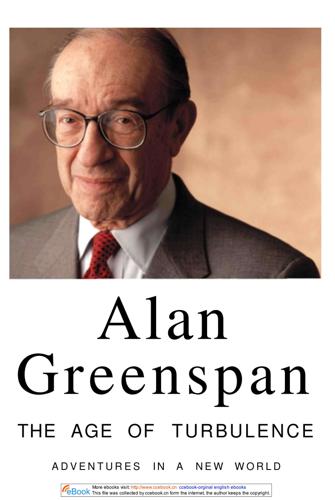
The Age of Turbulence: Adventures in a New World (Hardback) - Common
by
Alan Greenspan
Published 14 Jun 2007
Most developing countries rate poorly on all these counts. In fact ; a major reason they remain "developing" and find it difficult to graduate to "developed" is their low scores on property-rights enforcement. The United States ranks high. Its "political risk premiums" are among the lowest in the world.* I can readily imagine the technology knowledge gap between developed and developing economies narrowing significantly However, I find it difficult to foresee so marked a short-term change in China's authoritarianism, India's smothering bureaucracy or Russia's erratic enforcement of property rights. In fact, investor perception of such political risk changes so slowly that it would likely be years following any fundamental and credible changes before such risks were largely excised from economic decision making.

The Art of SEO
by
Eric Enge
,
Stephan Spencer
,
Jessie Stricchiola
and
Rand Fishkin
Published 7 Mar 2012
Their interactions with your team “fit.” The team members like the consultants and are eager to implement their advice. Choose someone whom you can be comfortable dropping your guard in front of. This is your expert and ideally your confidant, someone you can reach out to and talk to about challenges and knowledge gaps in a way that you cannot with in-house colleagues. Remember, an SEO business relationship is a relationship nonetheless, and if the two parties involved simply speak different languages (professionally and/or culturally) within their organizations, no amount of SEO expertise—and no amount of SEO budget—will make the relationship work.

I Am Charlotte Simmons: A Novel
by
Tom Wolfe
Published 9 Nov 2004
It's in what the religious right refers to as the New Testament, the Book-their name for a chapter-the Book of Mark, verse forty-two, in which Jesus says, `Suffer the little children to come unto me, for of such is the kingdom of Heaven.' That's their own prophet on the subject of children. That's it! Let'm come shake hands with me here in public! That's it! It's a photo op! On the basis of that they're telling us their religion is opposed to same-sex marriage? They don't know their own religion! We've got a knowledge gap here, and we'd have to build a bridge for them to ever get across it!" Whoops, howls of laughter, as the wise man outed the philistines. "Now, my wife and I have two children, and we love them, we're extremely close to them, and we'd do anything in the world we could for them. But do we think our marriage is `all about' them?
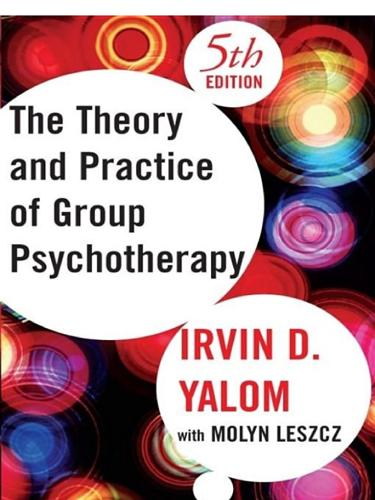
Theory and Practice of Group Psychotherapy
by
Irvin D. Yalom
and
Molyn Leszcz
Published 1 Jan 1967
Banks, “A Marriage of Opposites: Self-Help and the Health Care System,” American Psychologist 56 (2001): 173–74. K. Davison, J. Pennebaker, and S. Dickerson, “Who Talks? The Social Psychology of Support Groups,” American Psychologist 55 (2000): 205–17. J. Kelly, “Self-Help for Substance-Use Disorders: History, Effectiveness, Knowledge Gaps, and Research Opportunities,” Clinical Psychology Review 23 (2003): 639–63. L. Adamsen, “From Victim to Agent: The Clinical and Social Significance of Self-Help Group Participation for People with Life-Threatening Diseases,” Scandinavian Journal of Caring Sciences (Special Issue: The Challenging Complexity of Cancer Care Research) 16 (2002): 224–31.

Code Complete (Developer Best Practices)
by
Steve McConnell
Published 8 Jun 2004
Because this book focuses on construction, the most familiar part of the software life cycle, it makes powerful software development techniques understandable to self-taught programmers as well as to programmers with formal training. Technical Leads Many technical leads have used Code Complete to educate less-experienced programmers on their teams. You can also use it to fill your own knowledge gaps. If you're an experienced programmer, you might not agree with all my conclusions (and I would be surprised if you did), but if you read this book and think about each issue, only rarely will someone bring up a construction issue that you haven't previously considered. Self-Taught Programmers If you haven't had much formal training, you're in good company.